Lifestyle
Italian summer: From Puglia’s blue caves to Rome’s golden rooftops
There’s something magical about throwing a few bags in the backseat, lining up your favorite playlist and setting off on the open road with your favorite person beside you. This summer, that magic had a name: Puglia. A region where wild cliffs meet soft sand, where every corner hides a story, and where the light makes everything feel like a dream you don’t want to wake up from. This is the story of our southern Italian road trip, a journey of sun, sea, poetry, gelato and glamorous returns.
Postcard that breathes
First stop: Polignano a Mare, the crown jewel of Puglia’s Adriatic coastline. It’s no wonder it’s the most photographed beach in the region, perched atop dramatic cliffs, with whitewashed houses that seem to hover over turquoise waters.
We stood at Lama Monachile, breath stolen by the view. It’s not just a beach. It’s a natural amphitheater carved by time. We swam below the towering bridge, letting the sun dry us on ancient rocks, feeling small in the best way possible.
And then magic on a plate. Grotta Palazzese, a restaurant carved into a cliffside cave. We dined above crashing waves, with limoncello in our hands and poetry in our hearts.
And speaking of poetry, wandering Polignano’s old town, we stumbled upon Scalinata della Poesia’s “Poetry Staircase.” Each step is painted with verses, each one inviting us further down toward the sea. It felt like an invitation from the town itself: to pause, to read, to feel.
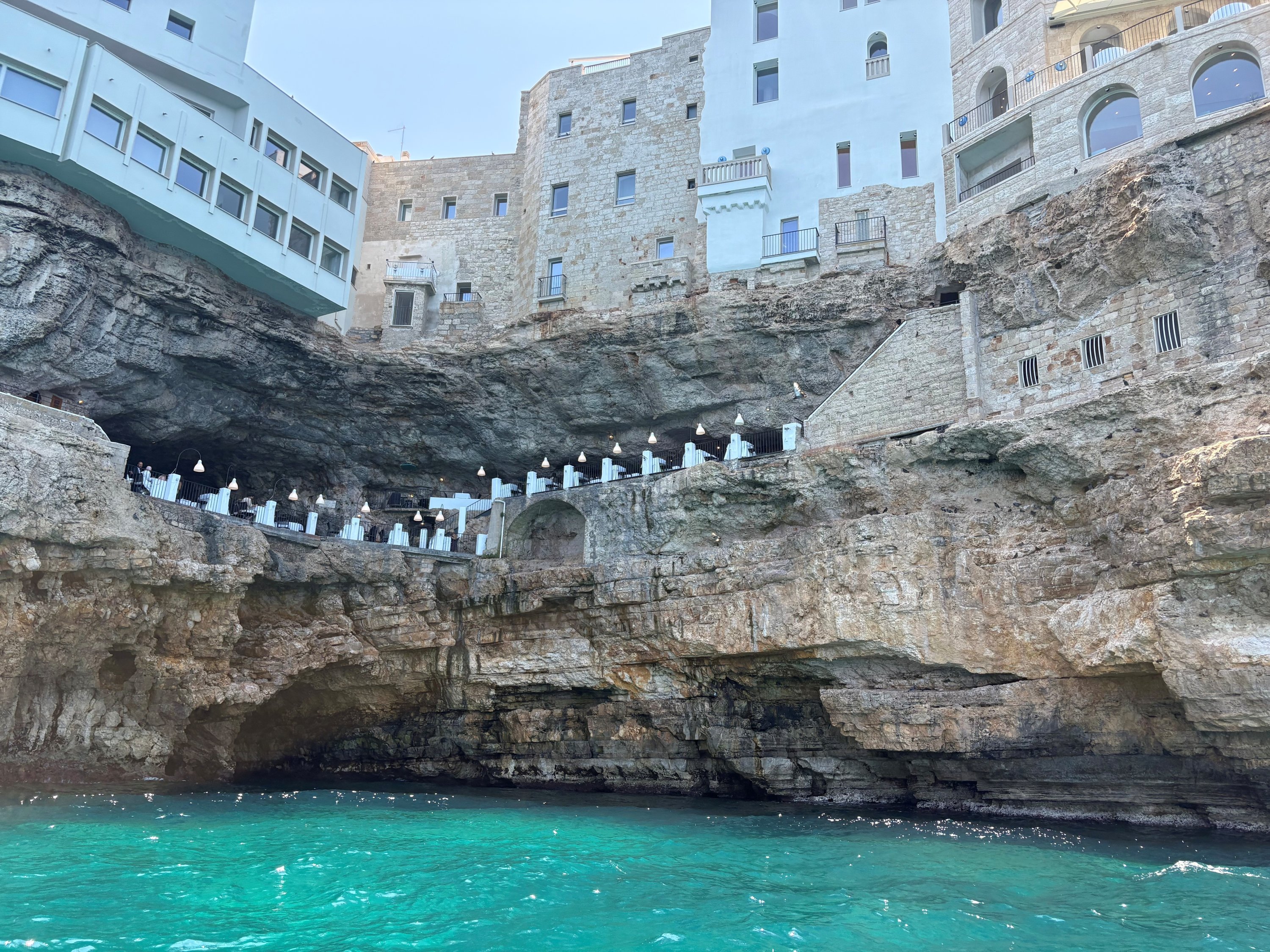
Natural pool for dreamers
Next, we drove further south to Grotta della Poesia, near Roca Vecchia. Legend has it that a beautiful princess once bathed in this natural pool, inspiring poets from all over Italy. Whether true or not, one dive into its crystalline waters and we were believers. The light filters through the cave openings in ways cameras can’t quite capture. It’s not just a swim. It’s a baptism into beauty.
Another must? Torre Sant’Andrea. Jagged rock formations jutting out of electric blue water, sculpted by centuries of wind and waves. We climbed, we swam, we sat in silence. This place demands it. It’s wild, raw and unapologetically itself.
Back to Rome
As all great road trips must, ours came full circle back to Rome. But with sea salt still in our hair and sand in our shoes, we returned differently. And Rome, in her eternal elegance, had one final act ready for us.
The first stop? As the eternal city continues to reinvent itself, this summer marks a dazzling new chapter in Rome’s timeless narrative: the grand opening of Orient Express La Minerva, the world’s very first Orient Express hotel. And what better place for such a debut than Rome, a city that has captivated cultural pilgrims and Grand Tour adventurers for centuries? Since 1883, Orient Express has been synonymous with elegance, mystery and a kind of journey that transcends geography. It was never just about getting somewhere; it was about being transported to a mood, a story and a time. And now, that spirit lives again in the very heart of Citta Eterna, where past and present embrace in a single, spectacular address. Set in the former Palazzo Fonseca, steps away from the Pantheon, La Minerva offers more than luxury. It offers legends. Restored with exquisite detail by Hugo Toro, the acclaimed artist-architect known for his sensitive balance between heritage and innovation, the hotel is a love letter to Rome’s layers. Every corner tells a story: marble floors whispering the footsteps of scholars, rich woodwork echoing with faded operas, bold contemporary touches that signal not just a revival, but a renaissance.
Rooftop views
If every city has a heartbeat, then Bvlgari Hotel Roma might just be the place where Rome’s eternal rhythm slows down, softens and becomes something you can actually feel. It is nestled in the very core of the city, between the ancient hush of Ara Pacis and the silent grandeur of the Mausoleum of Augustus. This new jewel in Bvlgari’s crown is not just a hotel, but a dialogue between past and present. Once inside, the Bvlgari world unfolds glamorous yet quiet, indulgent but never overdone. The interiors whisper Roman refinement with a modern accent. Think deep velvets, antique mirrors, curated art and impeccable detailing that reflects the house’s jewelry heritage. It’s a place where every element has weight, meaning and beauty. But perhaps the most unforgettable moments come from the rooftop, where Rome reveals itself. The domes, the ruins, the whispers of centuries past all lay out before you as you sip an aperitivo under the sky.
One last toast
Our last night took us to Hotel de Russie, where Aquazzura’s bar is the place to end a trip like this. It’s stylish, intimate and somehow still a secret. One final toast, one last shared smile. Rome said goodbye in her finest fashion.
La Romana dal 1947
Before heading home, one final (and very important) ritual: gelato. The best is La Romana dal 1947. It is rich, creamy and made with love and tradition. “Wow” is an understatement. Try the crema dal 1947 or the biscotto. You’ll thank us.
Final thoughts
What we found on the road wasn’t just a road trip. It was a rediscovery of nature, of joy, of each other. Puglia gave us its raw edges and sunlit treasures. Rome reminded us of timeless charm and the art of returning.
Lifestyle
Cruises, cuisine, surf: Angola charts new tourism path
When Feliesiano Muteca started surfing a decade ago, he had the waves at Cabo Ledo on Angola’s long Atlantic coastline pretty much to himself.
Now, the unspoilt and sandy beach about 125 kilometres (75 miles) south of the capital Luanda has become a prized destination for international surfers, with a reputation as a hidden gem.
The Portuguese-speaking southern African nation is still scarred by a long post-independence civil war that stalled its development, although parts of Luanda flash with oil money.
Wary of its dependence on oil and already burned by the market’s volatility, Angola is embarking on a drive to lure back foreign tourists by easing access for travelers and boosting its attractions.
These include Cabo Ledo, where Muteca is a qualified surfing instructor with the sport’s accredited body.
“There are two of us, and we give surf lessons,” said Muteca, who started out when he was about 10 years old by borrowing boards from other surfers.
“Otherwise, we’re there to help out on the beach,” he said, pointing to thatched cabanas being assembled on the sand.
Further along, a small lodge has set up a beachside cafe, with cabins on the hillside overlooking the Atlantic.
It is filled with a group of Germans enjoying the shade between waves. The same company, Carpe Diem, has a larger resort just up the coast.
Nearby tourist sites like the dramatic seaside Miradouro da Lua cliffs once had little more than a dusty road to a lookout point.
Now there’s a smoothie hut, with a branded wooden frame showing the best angles for photos and selfies.
Cruises and cuisine
After five decades of war that ended in 2002, the vast country had a Stalinist government suspicious of the outside world.
Oil fuelled a post-war boom but an oil crash sent the kwanza currency tumbling. In 2014, it traded at around 100 to the U.S. dollar. It is now trading around 900 to $1.
The oil boom days sent tourism to a high of nearly $1.6 billion in 2014, with the yacht crowd filling Luanda Bay and splashing huge sums on lavish beach parties.
That plunged to just $14.8 million last year, according to the National Bank.
It led the government to adopt a new tourism strategy.
Since last year, dozens of countries have visa-free entry. An airport where soldiers once patrolled with AK-47s is now staffed with smiling young travel ambassadors wearing denim overalls with bibs that read: “Can I help you?”.
The yacht club remains busy but Luanda has also become a stop for cruise liners.
Local tour companies are opening to guide visitors through the less developed interior.
And high-end international companies are adding Angola to their itineraries.
Luanda-born writer Claudio Silva in June co-hosted a week-long journey for foodies, travelling with a top Angolan chef to visit new wineries and explore pre-colonial cuisine and heritage farming.
“Deep-dive gastronomic tours like the one we’re doing with Roads and Kingdoms are an opportunity for us to tell our own stories, through food and culture, in urban and rural settings, where our journey is guided by the experiences of the people who live here,” he said.
South African luxury train operator Rovos Rail has also added the Angolan port city of Lobito to its routes, creating overland treks that can run across the continent from the Indian Ocean to the Atlantic.
Those journeys pass through inland areas largely unseen by outsiders for decades. That means accommodation can be basic or require camping.
The once-rich wildlife population was decimated by the years of war but government-sponsored repopulation efforts are under way, said Pedro Monterroso of African Parks, a non-profit conservation group.
Local rangers and communities are also being trained to become involved in the safari sector, said Monterroso, whose organization has been hired by Angola to run Iona National Park along the Namibian border in the ancient Namib desert.
“The vision is they want to be Namibia or Botswana in 10 or 15 years,” Monterroso said, referring to Angola’s neighbors that draw tens of thousands of foreign tourists every year to their unspoiled natural riches.
Lifestyle
Sophisticated side of Nice: A journey off tourist trail
When you think of Nice, you immediately imagine the famous Promenade des Anglais, the azure blue sea, glamorous yachts and sun-drenched beaches. But beyond this picture-book façade, a quiet elegance that makes Nice so special is revealed to the attentive traveler. The Cote d’Azur shows its intimate, almost private side here, full of hidden gems that escape mass tourism. An exclusive foray through the real Nice.
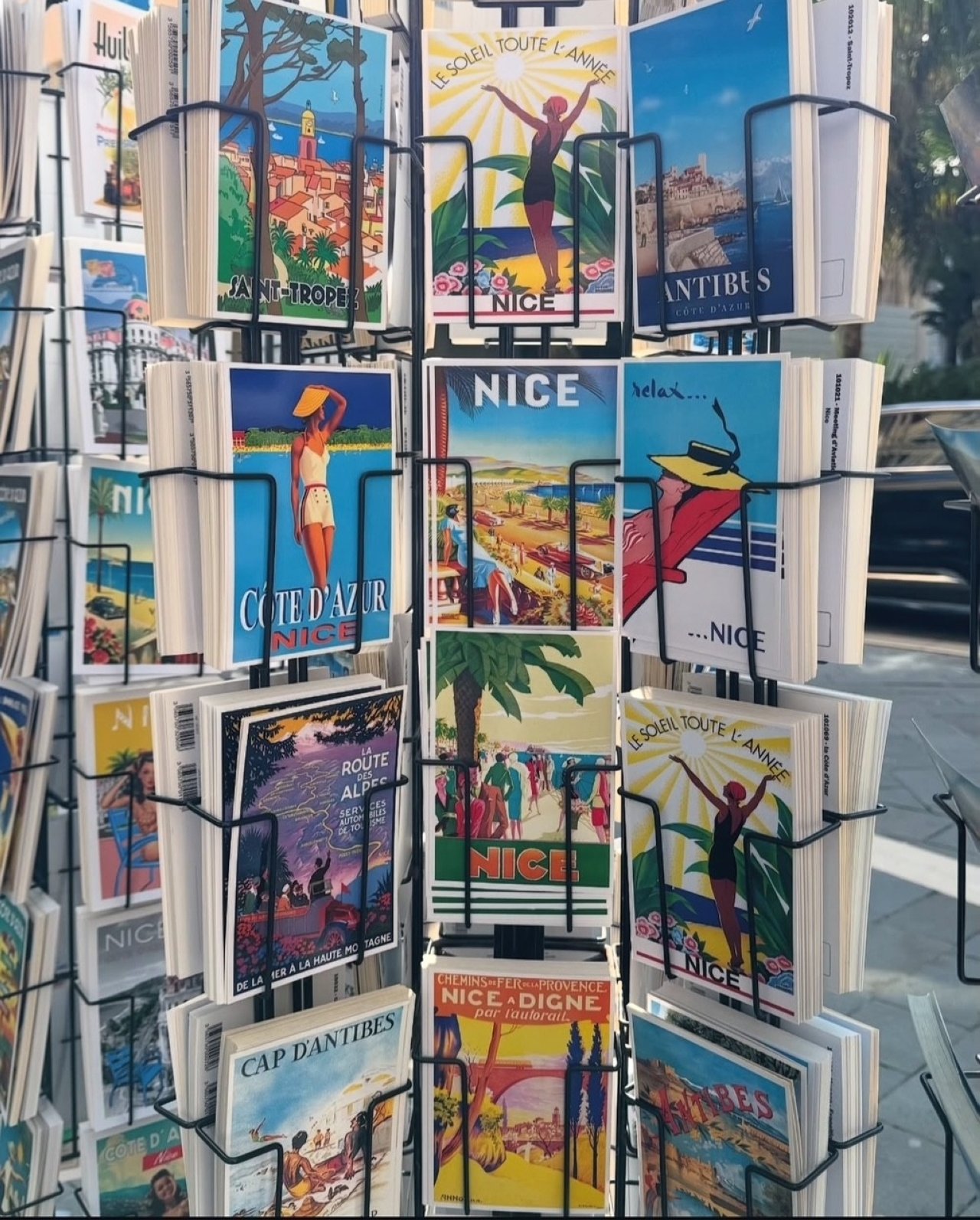
Hidden beaches
While the iconic city beach is often overcrowded, there are small, almost intimate bays not far from the old town that few visitors know about. Plage de la Reserve is one such place: surrounded by rocks, with crystal-clear water and a touch of privacy, it offers the perfect retreat for relaxing hours. Just a few minutes further on is Coco Beach – a hidden rocky beach that is mainly frequented by locals. Here you can hear the sound of the sea almost alone as the sun slowly sinks into the water.
If you want something even more exclusive, you should plan a short drive to Villefranche-sur-Mer. The small bay offers a spectacular backdrop with pastel-colored houses, small boats and an almost Caribbean-like water – perfect for a private boat tour or an aperitif on a yacht.
Viewpoints for connoisseurs
The view over the Baie des Anges from the Colline du Chateau is spectacular, and hardly any visitors get lost on the higher Mont Boron. Here, in the park of the same name, a breathtaking panorama opens up over the entire coast as far as Monaco. In the early hours of the morning or at sunset, this place has an almost magical atmosphere.
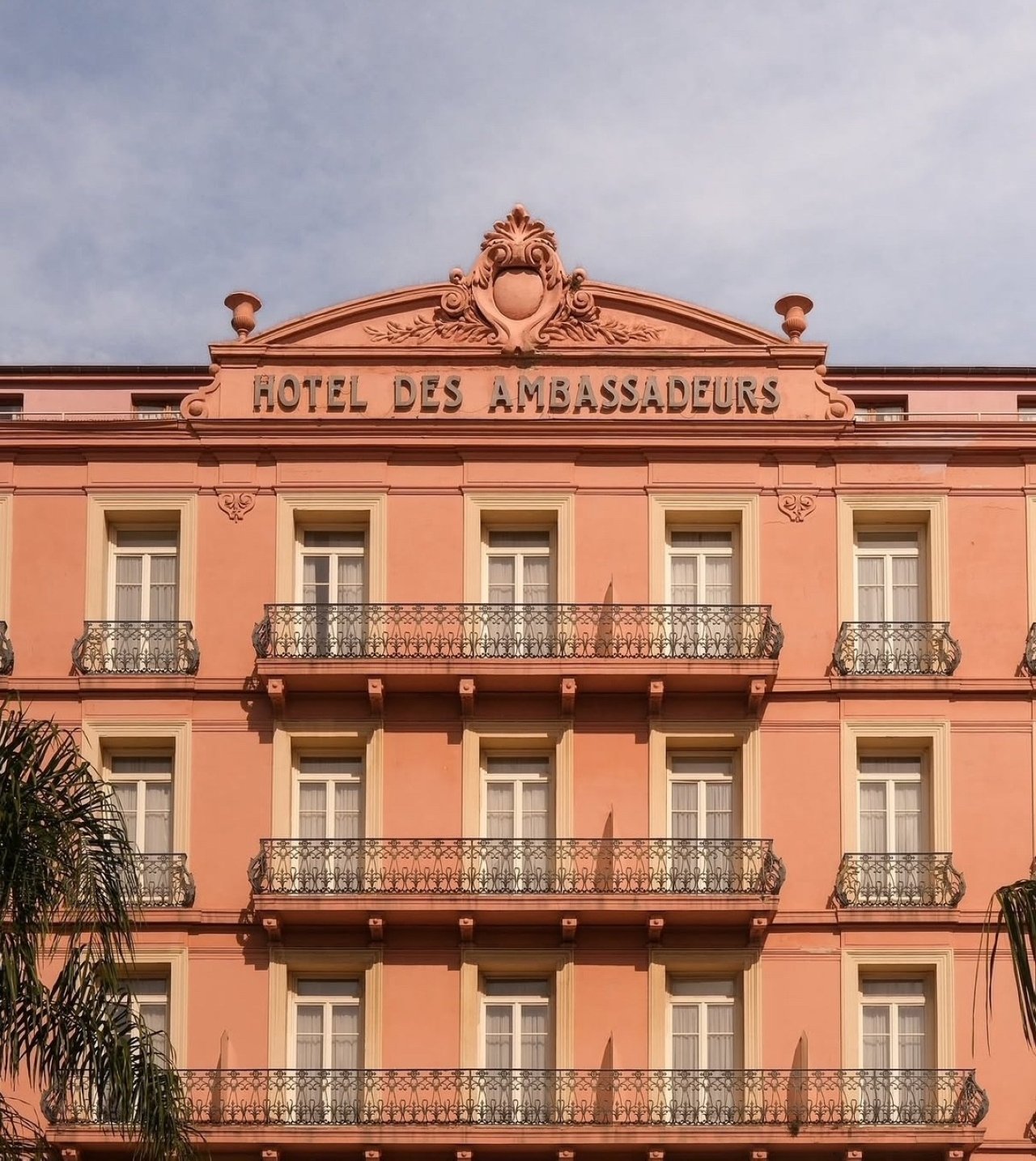
Even less well-known is the Cascade de Gairaut above the city: an artificial waterfall from the 19th century, nestled in a green oasis with sweeping views of the city – a perfect place for an elegant picnic, far away from the tourist hustle and bustle.
Off-track dining
Nice is famous for its Mediterranean cuisine, but delve deeper and you’ll discover a culinary scene full of character and authenticity.
Chez Pipo, tucked away in the Quartier du Port, serves the best socca in town – the traditional chickpea flatbread, crispy yet tender. A simple but sophisticated dish that carries the spirit of the Cote d’Azur.
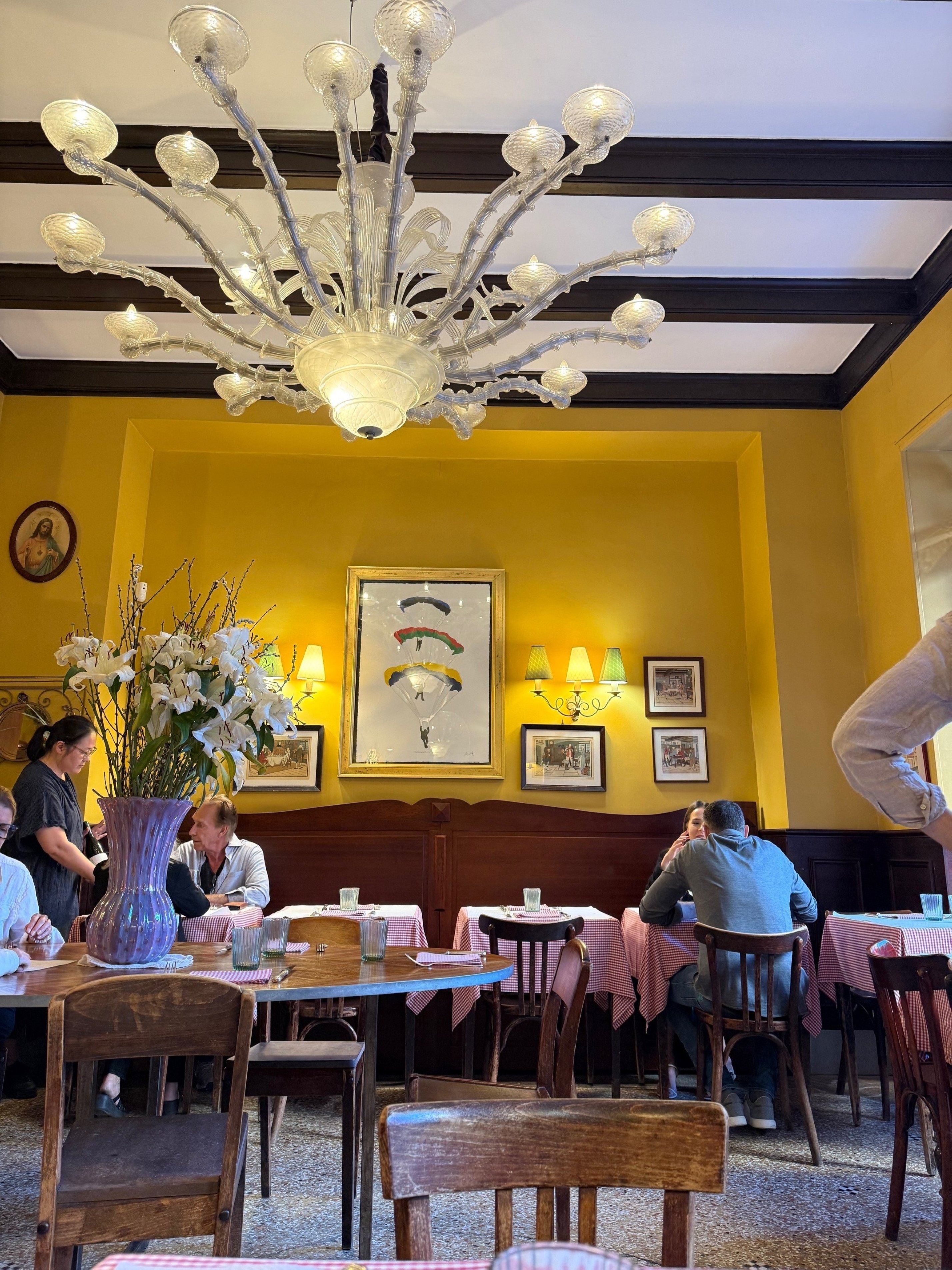
On the Marche de Liberation, away from the more famous Cours Saleya, you can experience the culinary soul of Nice in an even more authentic way. This is where the locals buy fresh seafood, Provençal vegetables and fine truffles. If you crave a glass of exceptional wine, the stylish wine bar La Part des Anges serves excellent, locally produced natural wines accompanied by fine tapas.
A very special insider tip is the elegant restaurant JAN, run by South African Michelin-starred chef Jan Hendrik van der Westhuizen. Here, French sophistication and South African influences merge to create an unforgettable gourmet experience.
Unknown districts
While most visitors drift through the old town and the promenade, the real Nice reveals itself in its districts away from the tourist crowds.
The Liberation district enchants with its traditional market, small bistros and the authentic lifestyle of the locals. In the cafes, older gentlemen sit with a pastis while young creatives enjoy their croissants.
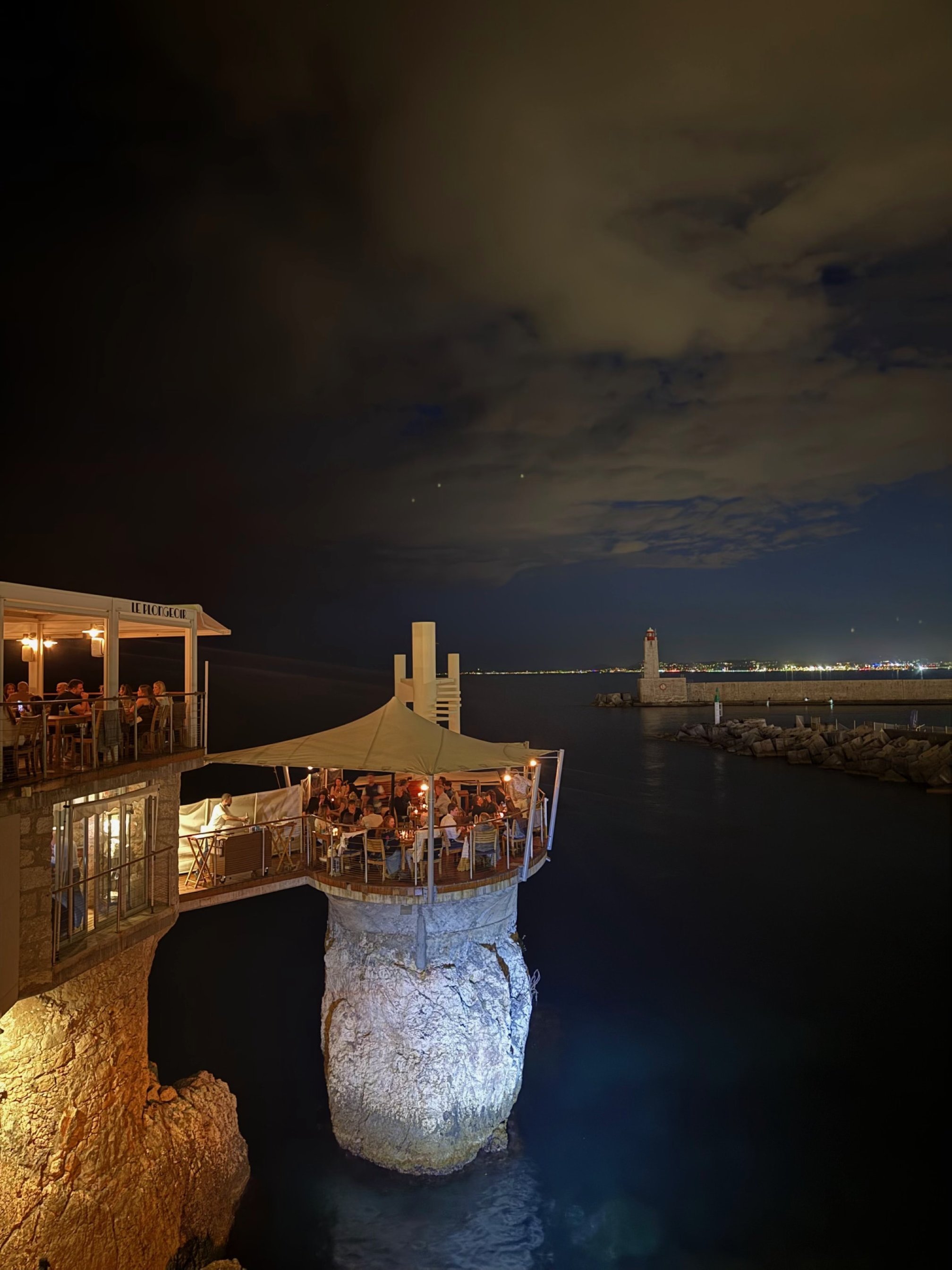
A few streets away, around Rue Bonaparte, the new, hip center of Nice is emerging: boutiques by independent designers, stylish cafés, intimate bars and galleries – a paradise for anyone who appreciates the subtle luxury of authenticity.
Away from classic museums
Of course, the Musee Matisse and the Musee d’Art Moderne are a must for any art lover. But the true cultural finesse is often hidden from view. The Musee Massena, a magnificent villa from the Belle Époque, tells the glamorous story of Nice with a touch of understatement.
And then there is the surprisingly diverse street art scene around the port: in the quieter alleyways of the Quartier du Port, you can discover modern, urban works of art that stand in exciting contrast to the historical backdrop.
Boutique instead of palace
If you want to enjoy Nice in style, the city’s charming boutique hotels are a welcome alternative to the grand palaces.
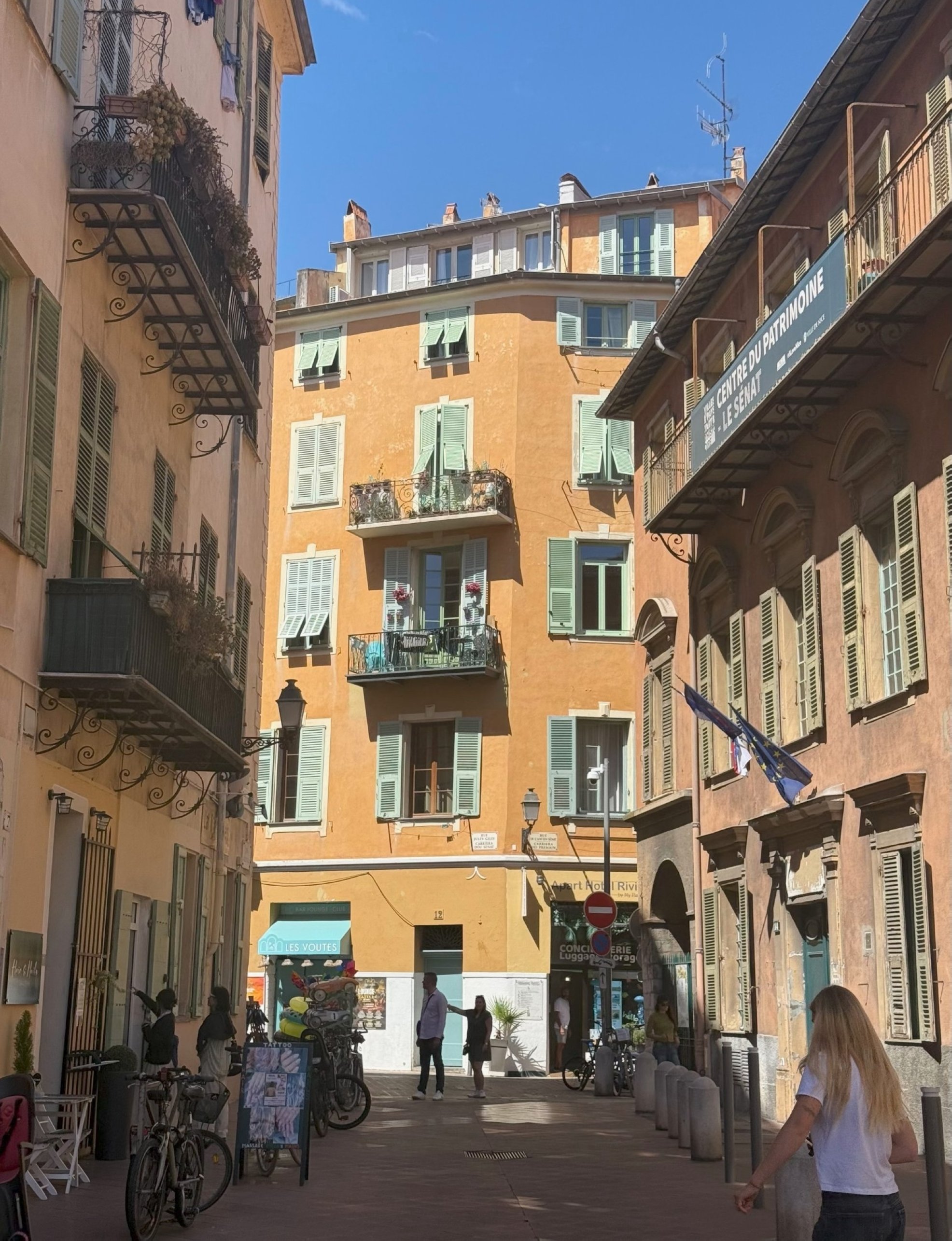
The Hotel Rossetti, in the heart of the old town, offers elegant rooms in a historic building with a view of Place Rossetti – it doesn’t get much more romantic than that.
The Hotel Amour Nice, on the other hand, combines stylish retro chic with urban luxury. The rooftop pool with a view of the city is an exclusive retreat after a day of exploring.
Elegance under stars
When the sun goes down, a nightlife begins in Nice that deliberately sets itself apart from the loud beach parties of the Cote d’Azur.
At the Bar des Oiseaux, you can meet artists, intellectuals and creative minds over excellent cocktails in an intimate atmosphere. For live music lovers, Le Shapko is an institution – jazz, soul and blues performed in a small, stylish club. Here you can experience Nice from its sensual, almost secret side.
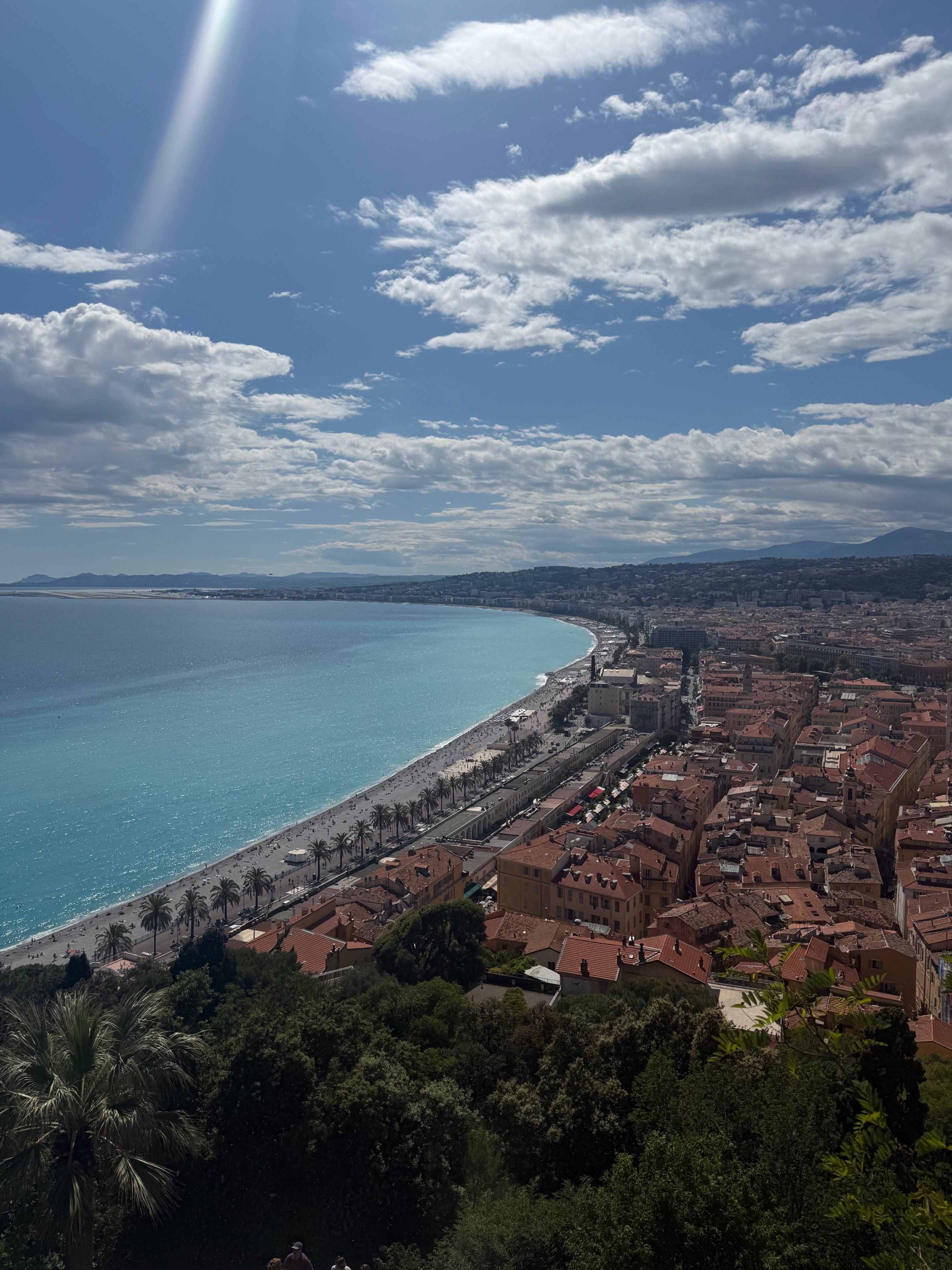
Nice for connoisseurs
Nice only reveals itself to the true connoisseur at second glance. It is not the obvious luxury that makes this city so special, but its discreet elegance, attention to detail and the many little escapes from everyday life. Those who leave the beaten track will discover a Riviera in Nice that remains invisible to mass tourism – exclusive, authentic and full of quiet beauty.
Because true luxury is not loud. It is quiet. And that is precisely what makes the quiet elegance of Nice so irresistible.
72 hours in Nice
If you want to experience the flair of this quiet elegance for yourself, a long weekend in Nice is just the thing.
Here is a refined itinerary for three unforgettable days:
Day 1
Arrive, take a deep breath, immerse yourself. Start with a stroll through the old town – past hidden boutiques, old facades and the scent of lavender and citrus.
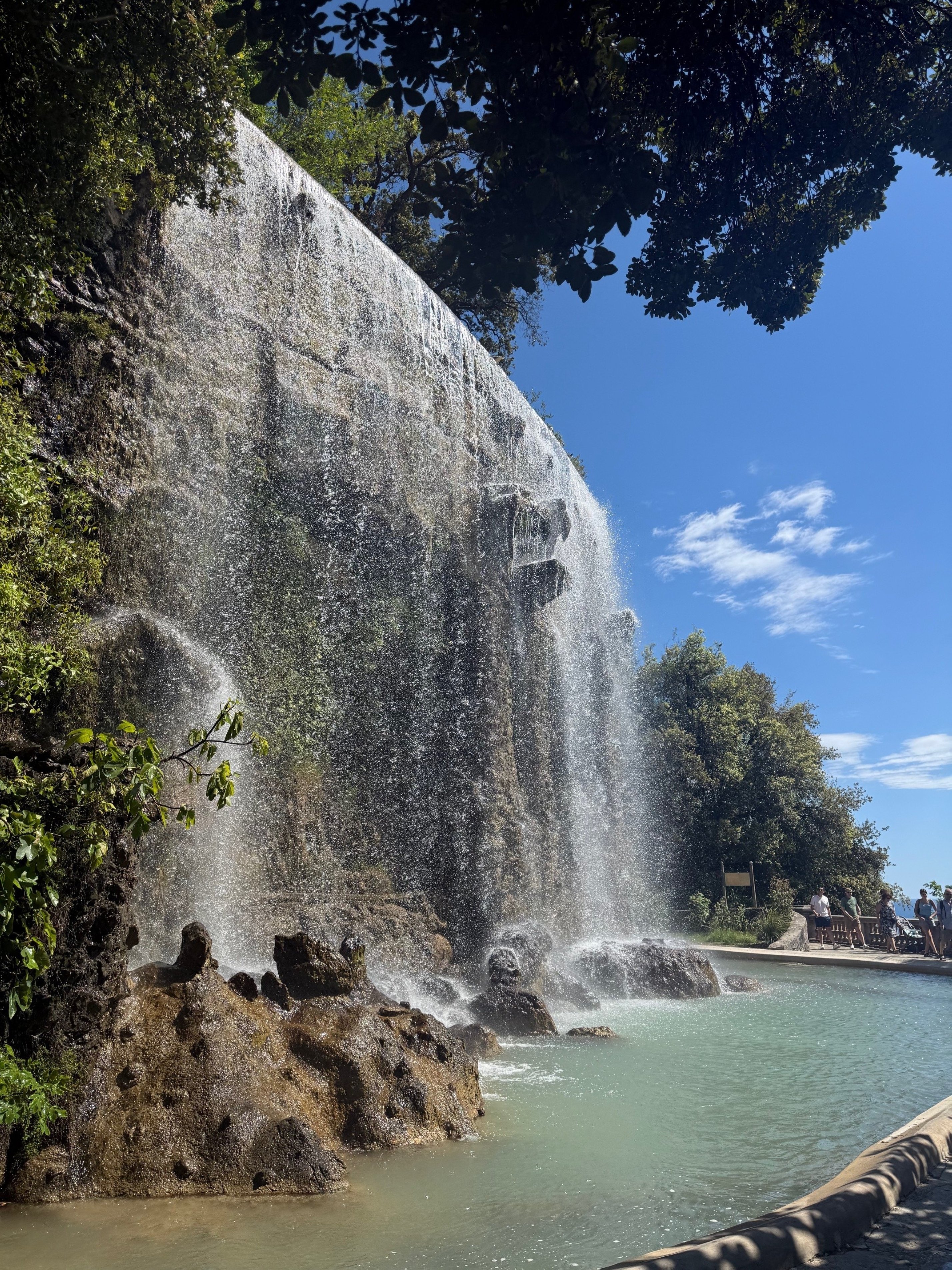
Enjoy a socca at Chez Pipo at lunchtime and end the day in style with a glass of natural wine at La Part des Anges.
Day 2
Early in the morning head to Mont Boron – the view of the sea at this hour is unforgettable. Then breakfast in the Libération district, followed by a visit to the Musée Masséna.
Evening: fine dining at JAN, where every dish tells a story.
Day 3
The day belongs to the sea. Either with a swim stop at the Plage de la Reserve, a walk to Coco Beach or for that special moment, a boat trip to Villefranche-sur-Mer.
The last evening is spent under the stars with live music at Le Shapko or a quiet drink on the roof terrace of the Hotel Amour.
A short trip becomes a short escape into a world where time, style and pleasure are in perfect harmony.
Lifestyle
Capri’s ‘mad blue’: Island’s enchanting sea, scenic wonders
Capri is a small island in the Tyrrhenian Sea just off the Sorrentine Peninsula coast of Naples. Most visitors rush through on a day trip, but if you want to fully experience the island at its best, I highly recommend slowing down and staying for at least four days. Capri is part of the region of Campania in the Naples province. The town of Capri is the island’s main population center. The island has two harbors, Marina Piccola and Marina Grande.
The island may be small, but a few days will give you extra time to explore the famous Blue Grotto, hike Monte Solaro, Anacapri, the iconic Faraglioni rocks, the mystical Blue Grotto, charming Marina Piccola, historic Villa San Michele, the Punta Carena Lighthouse and of course, Capri’s breathtaking nature and exceptional restaurants. The island that will mesmerize you with its unique shades of blue, and people watching in the Piazzetta without feeling rushed is a memorable experience.
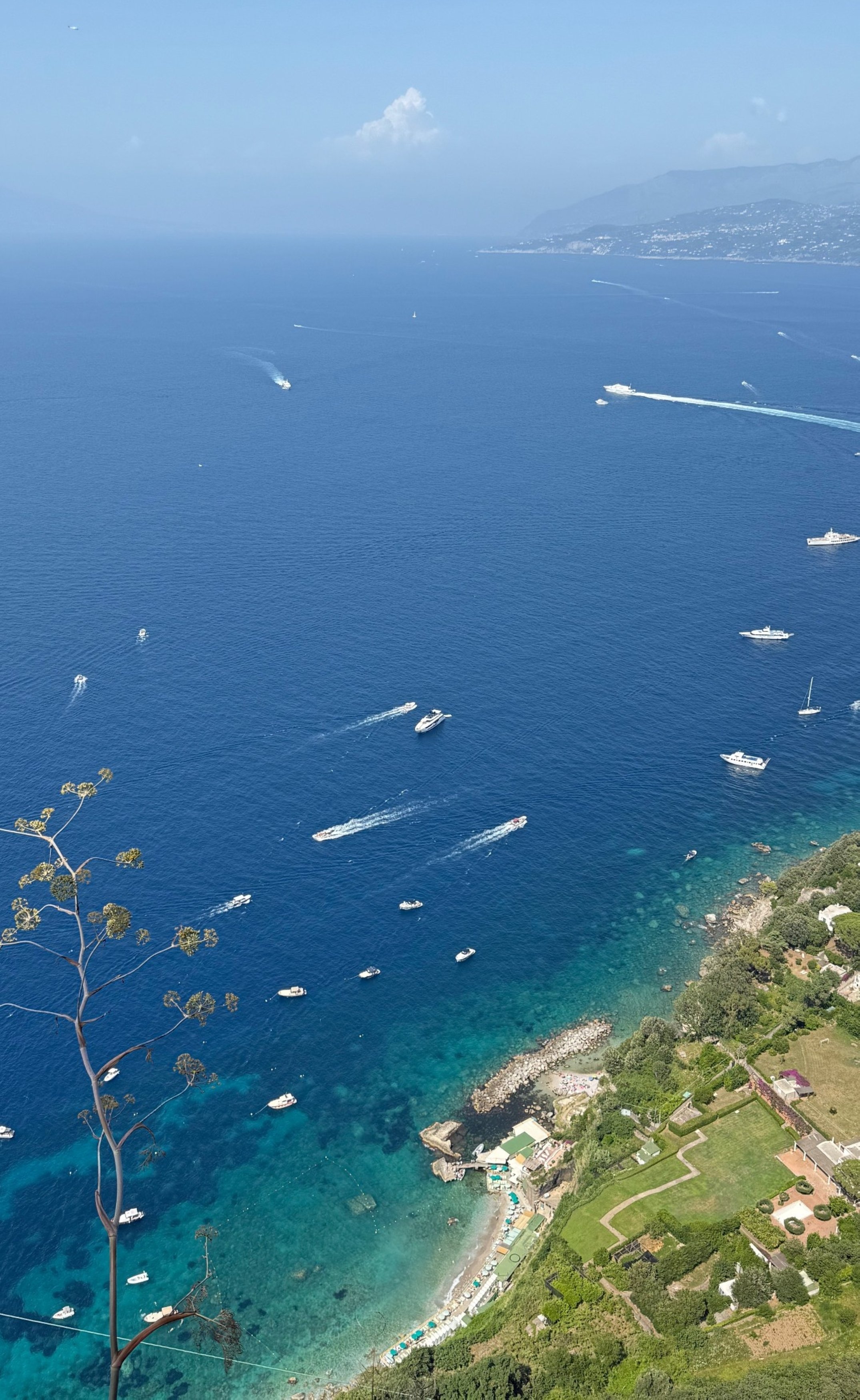
Just a 30-minute ferry ride from Naples, Capri is a destination where every season brings its own kind of magic. There’s so much to see and experience on the island, from wandering the quiet elegance of Anacapri to cruising past the dramatic Faraglioni, swimming in the glowing waters of the Blue Grotto, or simply enjoying a long lunch with sea views.
One of the must-do experiences is a boat tour around the island. It is an unforgettable way to admire Capri’s wild coastline. You can also rent a scooter and explore from one end to the other, or lace up your walking shoes and discover hidden paths and scenic viewpoints on foot.
But let’s pause for a moment because the sea here is a different kind of blue. A “mad blue,” as the locals might say bold, deep and endlessly inspiring. This magical hue has stirred the imagination of fashion icons and artists alike for decades.
On the far side of the island lies Punta Carena, home to Capri’s famous lighthouse. It’s a perfect spot for sunset lovers, quiet, scenic and drenched in golden light. You can walk there from Anacapri in about 40 minutes, or drive/scooter over in 10. While you’re there, don’t miss Sunset Maliblu, a relaxed beach club where you can unwind after a day of exploring. Just don’t forget your swimsuit because between the sunset views and the turquoise waters, you’ll want to dive right in.
Capri Palace Jumeirah
Nestled at the foot of Mount Solaro in Anacapri, Capri Palace Jumeirah is often referred to as the island’s hidden gem. Home to 80 rooms and suites, this elegant retreat is one of Capri’s most distinguished properties, boasting a world-class spa and two Michelin stars. Guests arrive via a picturesque, vine-draped walkway that opens onto a panoramic terrace with sweeping views of nearby Ischia.
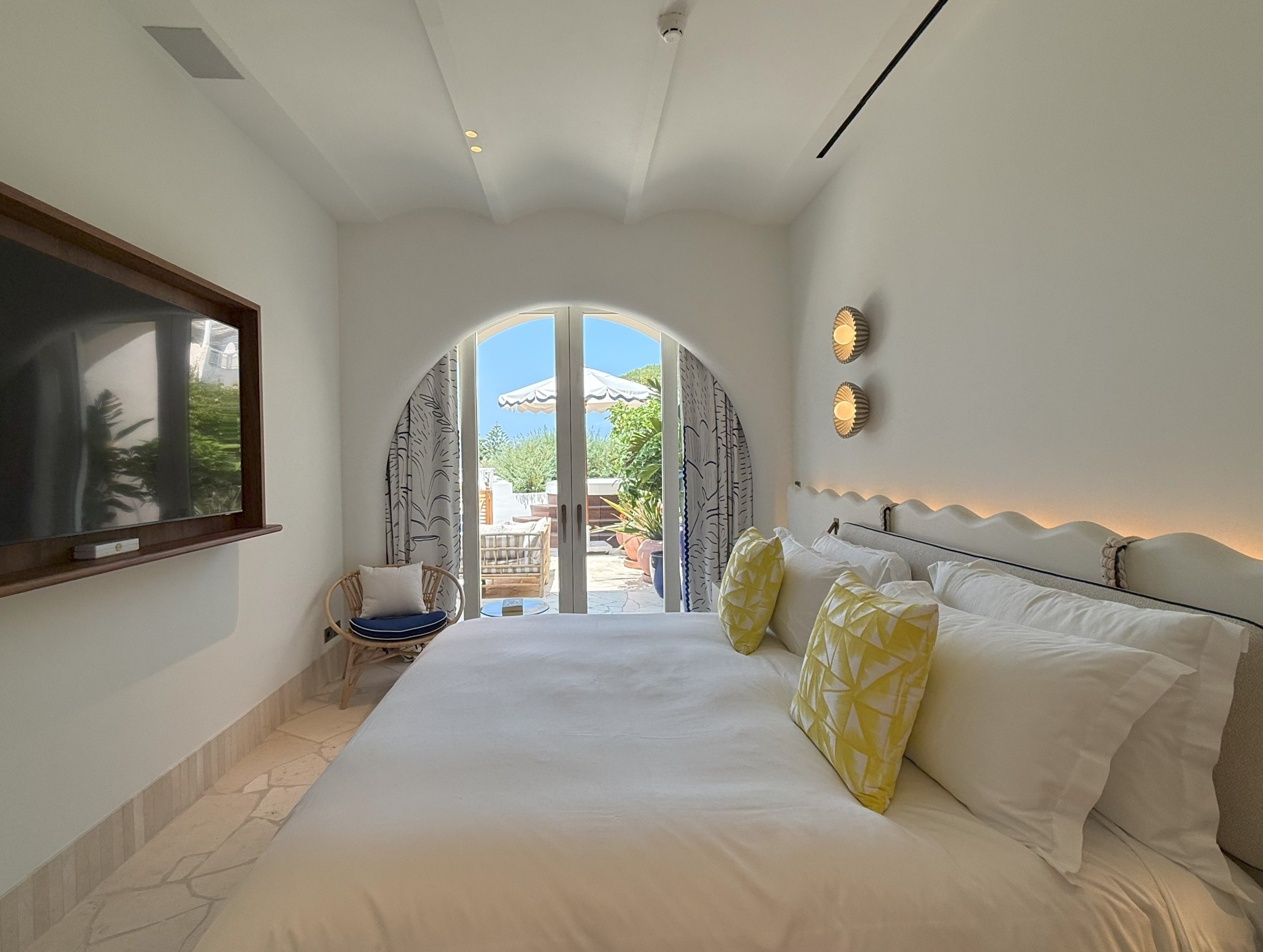
Anacapri offers a quieter, more authentic side of the island, where locals still go about their daily lives. Just steps outside the hotel, you’ll find yourself immersed in the relaxed rhythm of village life, far from the more touristy bustle of central Capri.
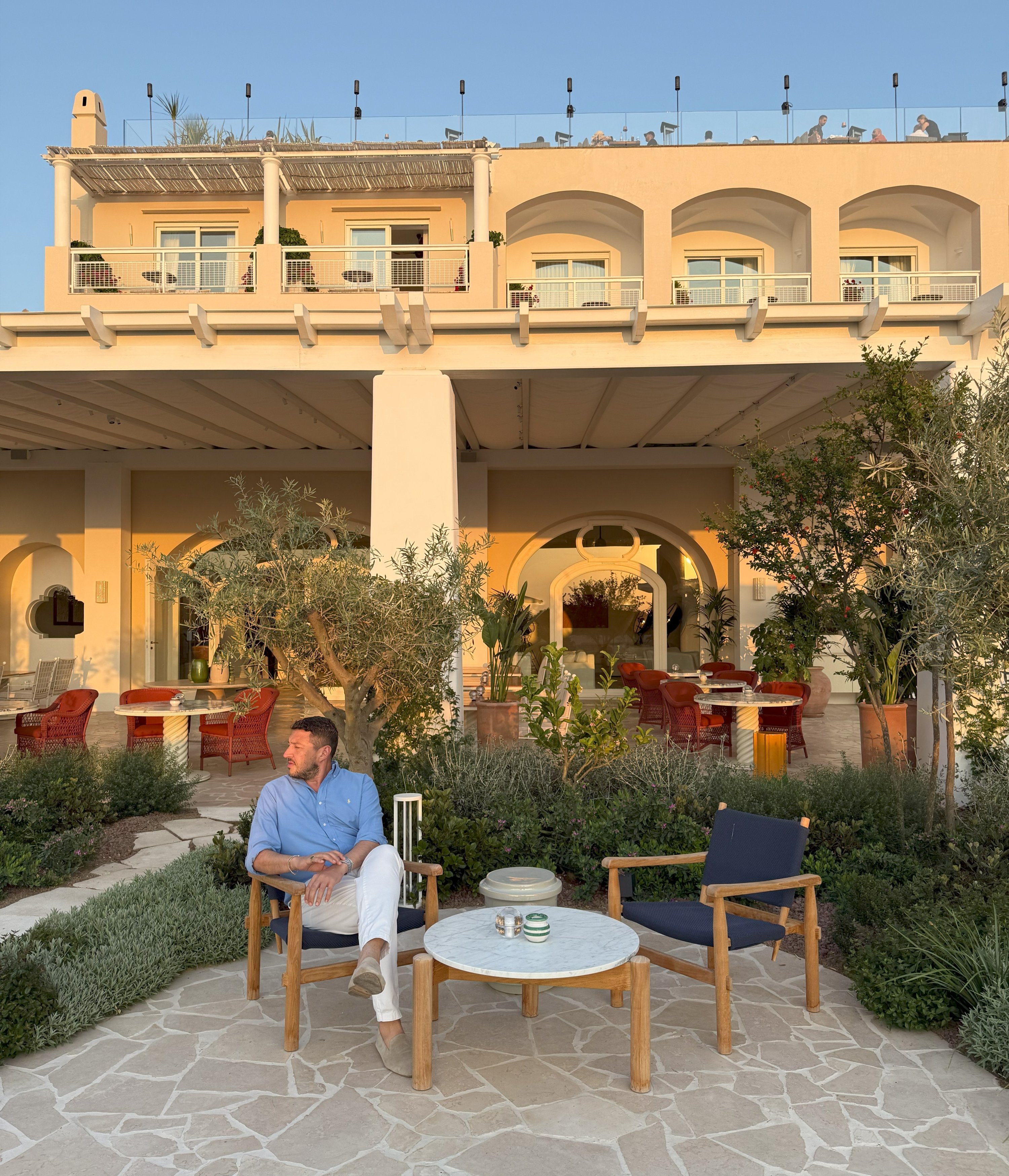
Don’t miss dinner at the two-Michelin-star L’Olivo restaurant and bar. Off-site, Capri Palace Jumeirah also operates Il Riccio and aMare, a world-renowned pizza spot you shouldn’t miss.
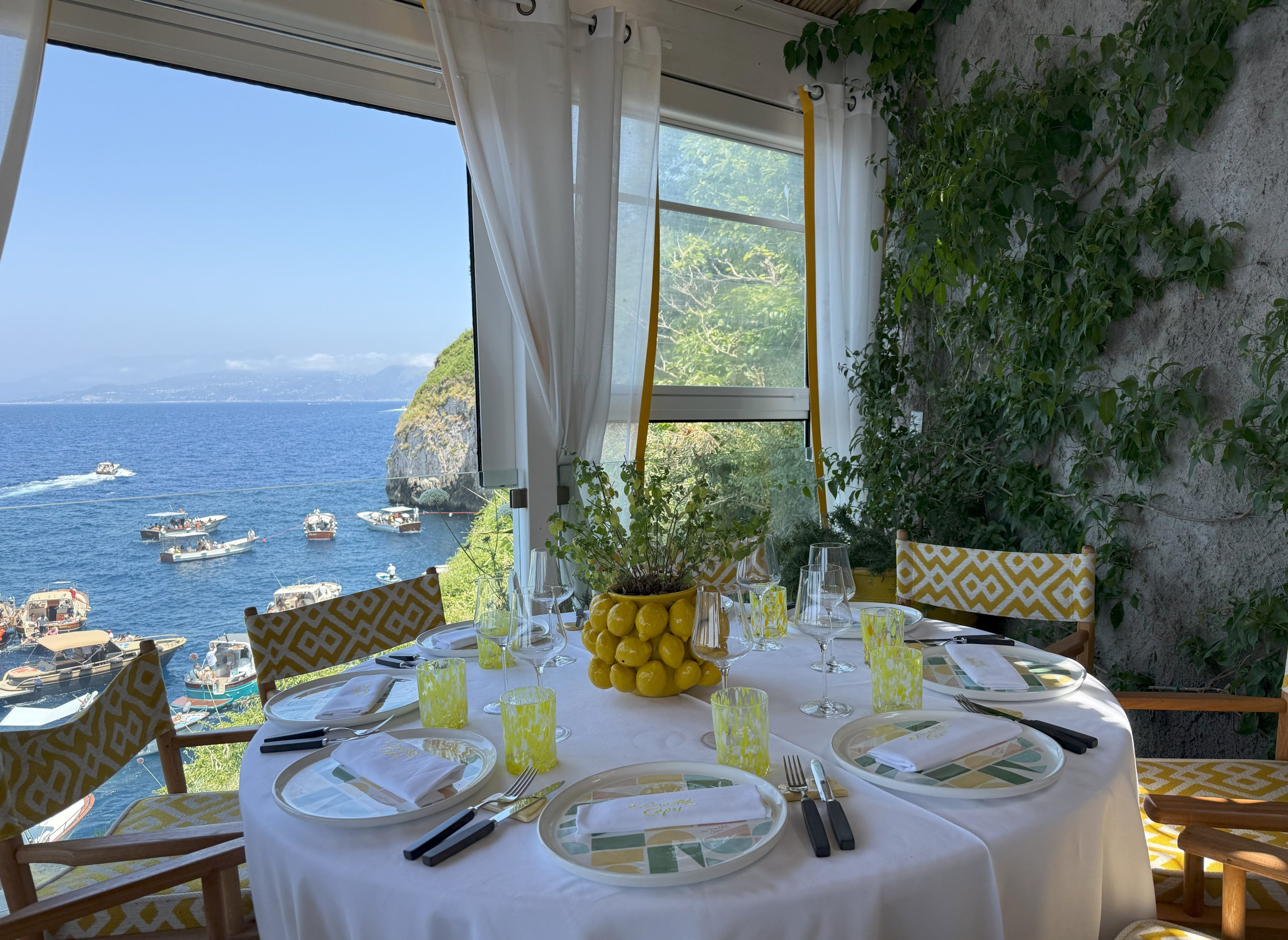
The rooms at Capri Palace Jumeirah are styled in a quintessential Capri palette of blue and white. Milky ceramic tiles with delicate blue patterns and crisp white linen upholstery create an atmosphere that is both fresh and elegant.
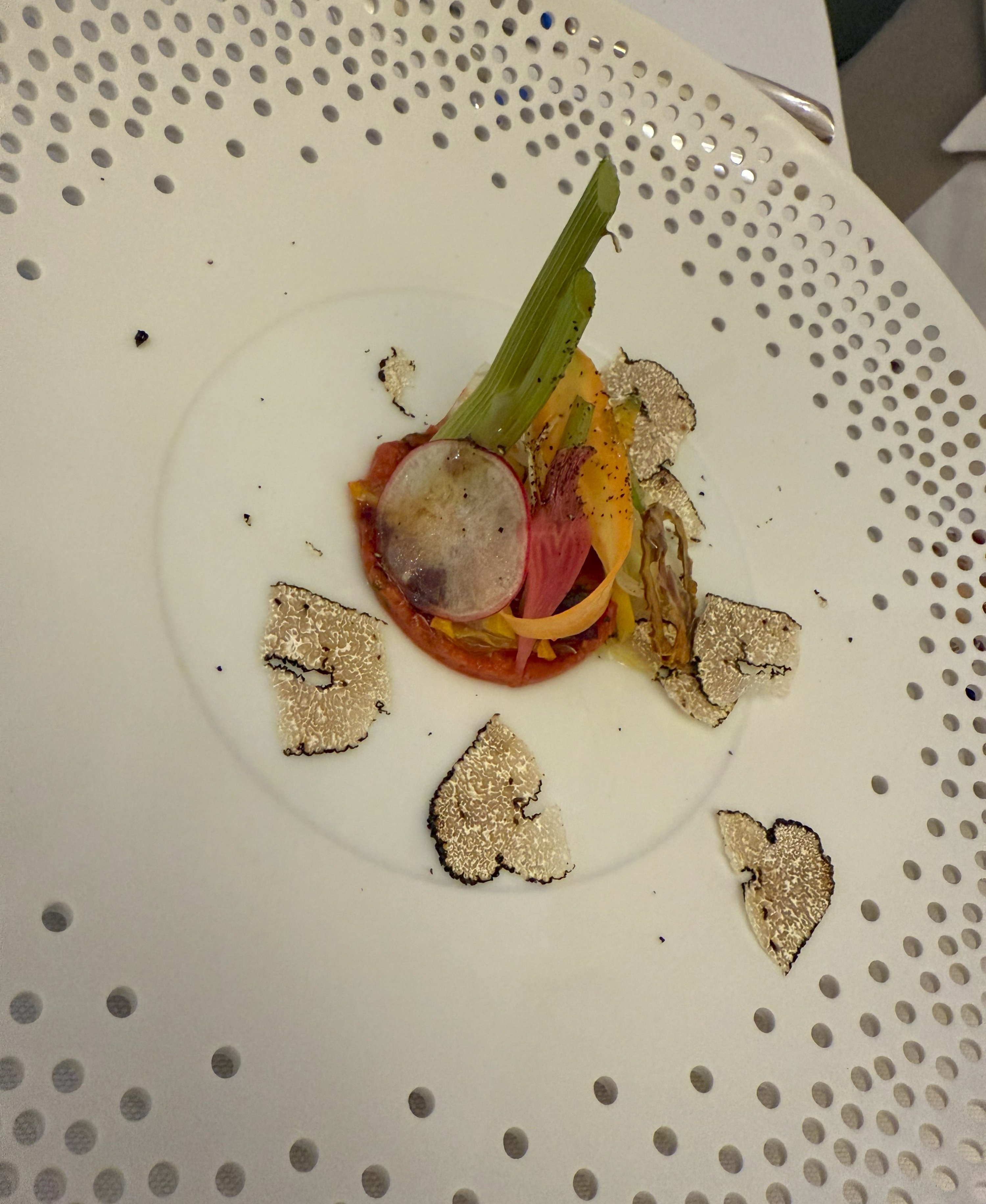
This year, the hotel introduced five brand new suites, each designed by renowned Italian architect and designer Patricia Urquiola. These suites, complete with private terraces, feature custom-made ceramics in soft blue tones that reflect the island’s natural beauty.
What truly sets the hotel apart, however, is its impeccable service. The professionalism and warmth of the staff elevate the entire experience, turning a luxurious stay into something truly exceptional.
Villa San Michele
When he died, the Swedish physician and author Axel Munthe left behind a legacy as a healer as well as a reputation for generosity; he would treat impoverished patients without charge. He also left behind Villa San Michele, his home and garden in Anacapri, which has been lauded as one of the most beautiful in Italy. With impressive horticultural knowledge, Munthe filled his gardens with rare and exotic flora. Today, Villa San Michele is a destination for tourists curious to see the idyll Munthe once inhabited.
Monte Solaro
Monte Solaro is the highest point on the island of Capri. From here, you can see the Faraglioni Rocks, Mount Vesuvius, the Isle of Ischia, Sorrento and the Bay of Naples.
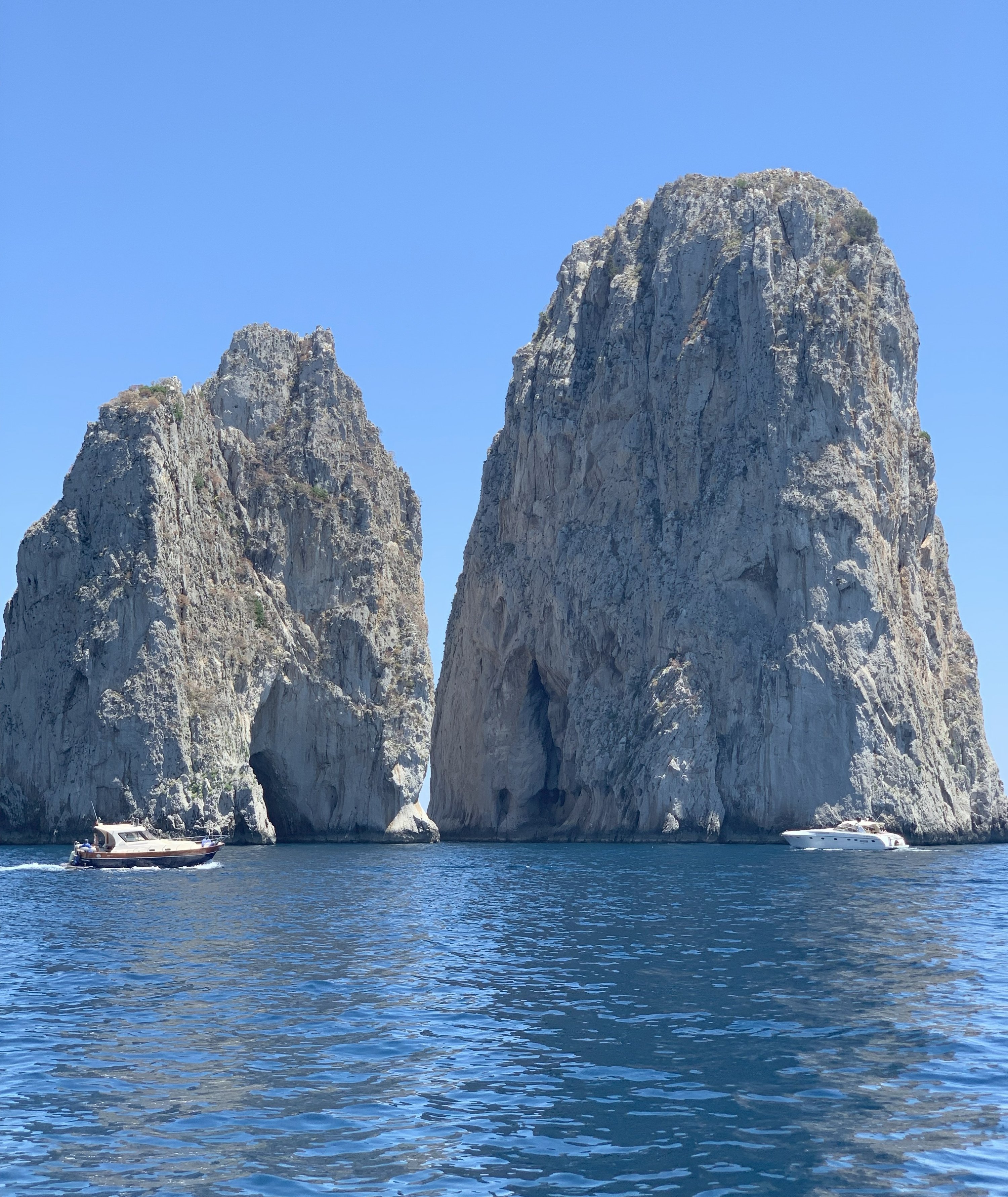
From the bottom station in Anacapri, it is a seven-minute ride by chairlift to Monte Solaro. Tickets cost 12 euros ($14) round trip. The entire visit takes about 45 minutes to one hour.
Punta Carena
Located on the southwest corner of Capri, far away from major tourism centers, the Punta Carena Lighthouse is a secluded and picturesque attraction near Anacapri. First used in 1867, the lighthouse is one of the oldest in Italy and enjoys spectacular views of the coastline. There is a public beach and picnic area near the lighthouse, and there are a few charming beach cafes in the area as well. Visitors love the history and secluded nature of this attraction.
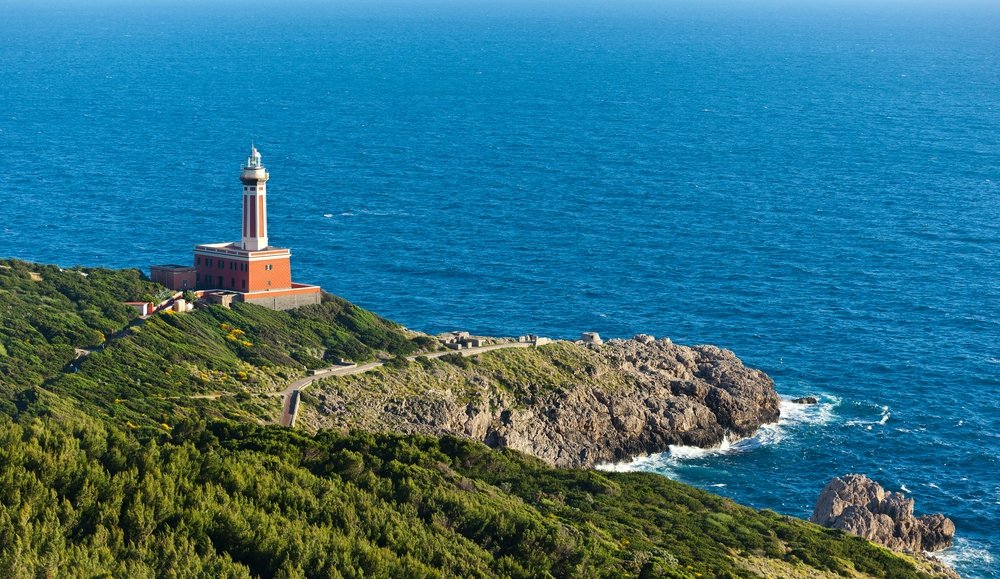
You can access this attraction by boat, foot or bus. Many boat tours pass around the lighthouse, and sunset views of it from the water are spectacular. The hike from Anacapri on Via Nuova del Faro takes about an hour. If you’d prefer to take the bus, you can take the Faro Anacapri route from Piazza della Pace, which will take you right by the lighthouse.
Restaurants
Da Gelsomina
A Culinary Gem Above the Bay of Naples, tucked away in the peaceful hills of Anacapri, Da Gelsomina is one of the island’s most beloved dining spots, celebrated for its traditional island fare and breathtaking views stretching across the Bay of Naples. Meals are served beneath a vine-draped pergola or on a panoramic terrace, where the Mediterranean landscape unfolds in every direction from the countryside of Anacapri to the distant silhouettes of Mount Vesuvius and Ischia.

Here, the menu honors time-honored recipes passed down through generations. Savor island classics like ravioli capresi, coniglio alla cacciatora, pollo al mattone (brick pressed chicken) and spaghetti alla chiummenzana, tossed with sun ripened tomatoes. Each dish is prepared with seasonal ingredients from the garden and cooked with the same care and authenticity that has defined Da Gelsomina for decades. By day, the view is drenched in sunlight; by evening, it’s bathed in golden hues as the sun sets over the sea. The perfect backdrop for a truly Caprese dining experience.
Aurora restaurant
More than just a restaurant, it’s a story of passion and inspiration passed down through generations. A legendary destination favored by icons such as Valentino, Jackie O, Truman Capote and Giorgio Armani.
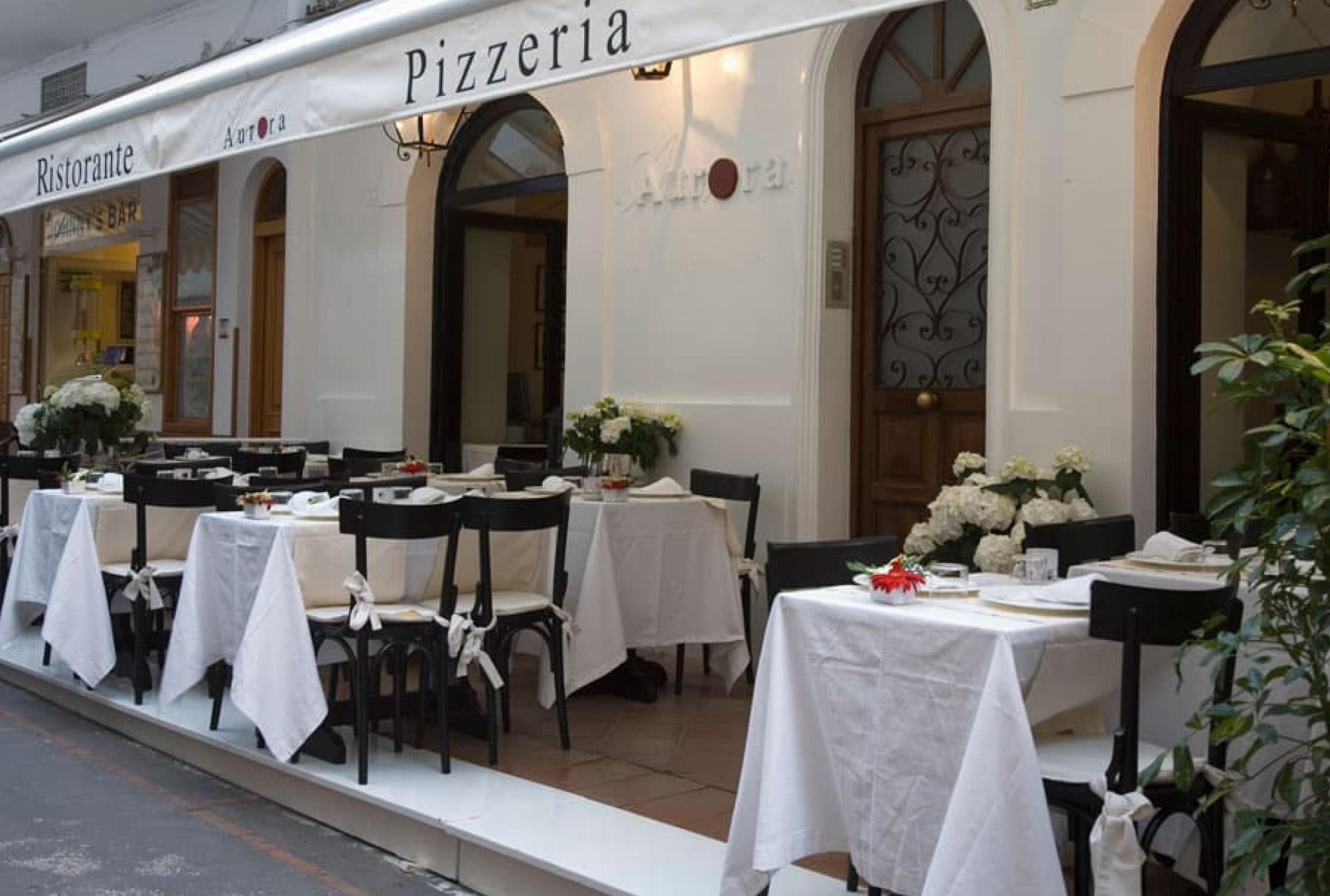
Be sure to try the signature pizza all’acqua, a cherished century-old recipe, alongside a curated wine tasting experience and irresistible traditional Neapolitan sweets.
For over 100 years, the iconic Aurora restaurant and pizzeria, run by the D’Alessio family, has been delighting Capri’s visitors with exceptional food and wine. Nestled on the stylish Via Fuorlovado, Aurora has earned international acclaim for its refined Mediterranean cuisine and beloved Neapolitan and Caprese classics. Under the creative touch of Chef Franco Aversa, these time-honored dishes are reimagined with subtle innovation, securing Aurora’s place among Capri’s most exclusive dining destinations.
Travel tips
From Istanbul to Naples International Airport, there are two flights per day in summer. Turkish Airlines flies one in the early morning and one in the afternoon to Napoli.
I recommend purchasing your ferry tickets from Naples to Capri in advance. Especially during the holiday season, the ferries fill up quickly.
Lifestyle
Van’s Çalyan glacier lake draws nature fans to eastern Türkiye
Çalyan Lake, a glacier lake situated at an altitude of 3,200 meters (10,498.69 feet) in Van, eastern Türkiye, has become a popular destination for nature enthusiasts as the weather warms up.
Located 80 kilometers (49.71 miles) from Van city, near the Van-Şırnak border in eastern Türkiye, this glacier lake, formed by unmelted snow and ice masses, offers visitors breathtaking and serene landscapes.
With the arrival of warmer weather, both local residents and visitors from different provinces flock to the lake area to enjoy a peaceful time in nature, away from the city’s noise and hustle.
A group of 40 nature lovers from the Vadi Mountaineering and Outdoor Sports Club overcame the challenging plateau road to reach the lake at 3,200 meters, where they took a nature hike and captured the unique scenery.
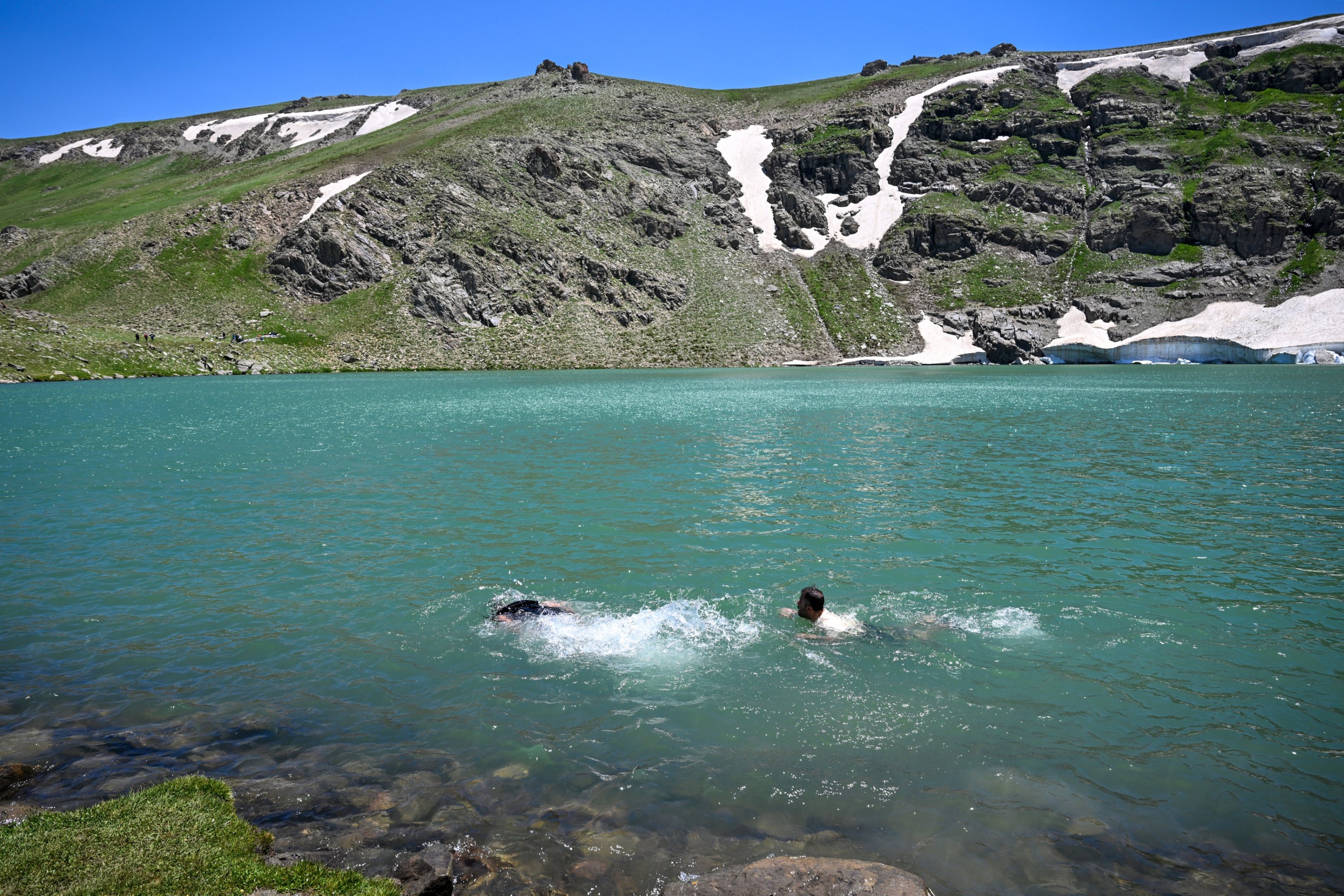
Some visitors cooled off by swimming in one of eastern Türkiye’s highest-altitude glacier lakes, while others enjoyed a lively atmosphere by dancing the traditional halay in the tranquil environment.
Mahmut Çelik, who guided the nature lovers, told Anadolu Agency (AA) that they came to the plateau with a group of 40 people to witness eastern Türkiye’s natural beauty.
Highlighting that the lake and surrounding nature attract attention especially during this time of year, Çelik said: “People couldn’t come here before because there was no peaceful environment. The area has beautiful nature. The lake, formed at 3,200 meters due to melting snow, provides a tranquil atmosphere.”
But he cautioned that visitors must take care of the location and take their trash with them.
“The best way to keep the area clean is not to pollute it in the first place. These beauties must not be destroyed. We should protect our natural wonders and leave them for future generations. To see such beauty, you have to climb high. To enjoy a good view, you need to walk, sweat and put in effort, and it’s definitely worth it.”
Nature lover Ezelhan Şelem expressed regret for not having visited earlier. “I am saddened that I hadn’t seen this place before. It’s truly a natural wonder. I noticed both the natural beauty and the rich flora. It was an amazing experience for me. I would describe it as an untouched location. I’ve never been to a lake this high before. The view is mesmerizing.”
Emrah Yavuz, who traveled 80 kilometers to reach the lake, said: “I had the chance to see a natural lake formed by melting glaciers. It’s a place to visit and explore in summer. Nature thrives when kept clean, and we need to keep our environment clean.”
Lifestyle
Milan’s makeover: New energy, fresh hot spots in Italy’s fashion capital
Once known primarily for its gray skies and businesslike air, Milan, Italy’s second largest city, has undergone a striking transformation. Founded in 590 B.C. and today the capital of the Lombardy region, the city has shifted from a financial hub with a somber rhythm into one of Europe’s most exciting urban destinations. Thanks to a wave of vibrant energy, innovative architecture, cutting-edge design boutiques and an explosion of culinary creativity, Milan is now firmly on the radar of modern travelers.
Whether you’re a first-time visitor or a seasoned explorer returning to rediscover the city, Milan now offers a fresh, contemporary experience unlike anywhere else in Italy.
Must-see cultural landmarks
Santa Maria delle Grazie
This UNESCO World Heritage site is home to one of the most iconic works of art in history: Leonardo da Vinci’s “The Last Supper.” While the image is familiar from souvenirs and reproductions, nothing compares to standing before the emotionally powerful original. A fascinating footnote: Jesus’s feet were destroyed in 1652 during an ill-advised renovation that added a doorway beneath the mural.
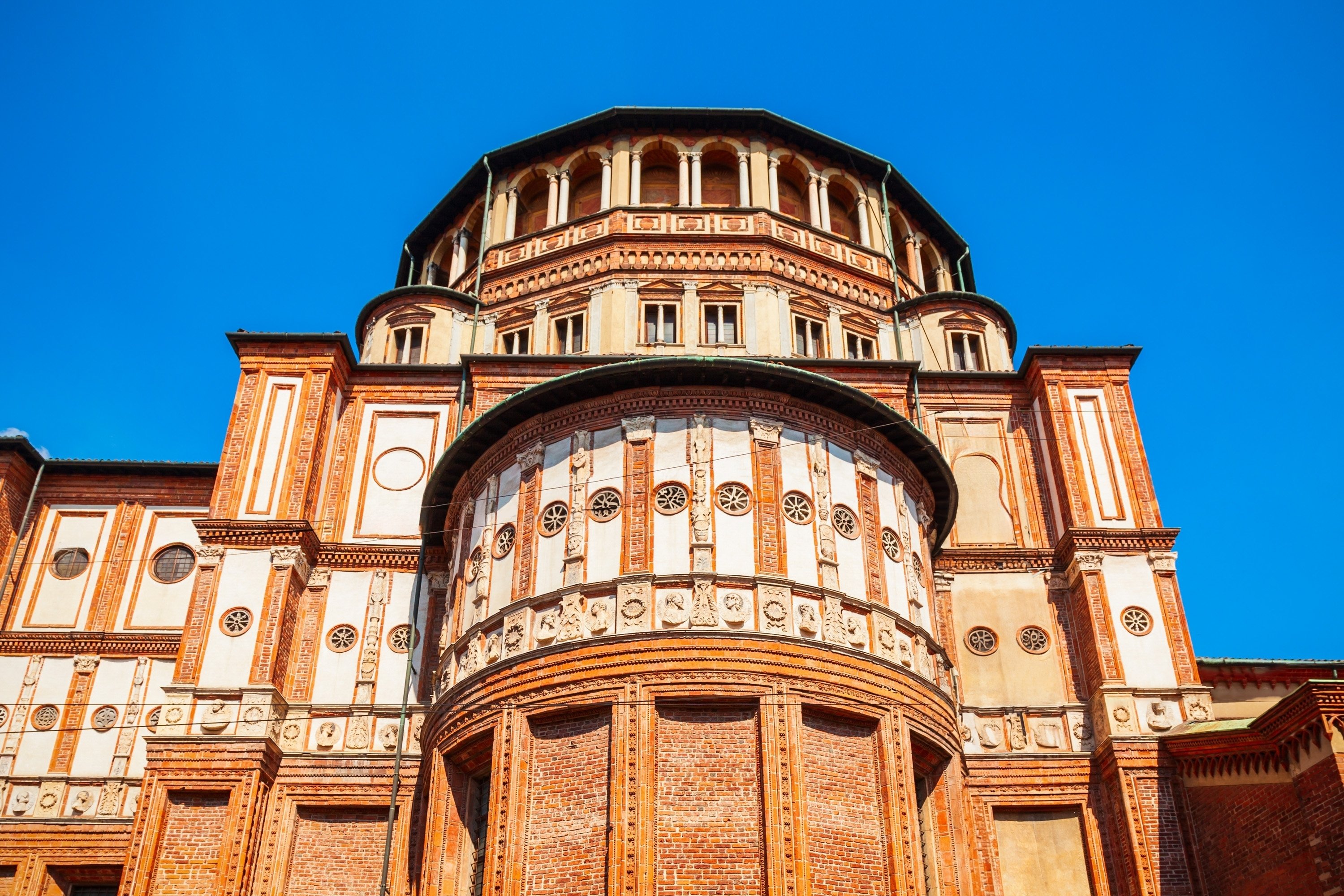
Insider tip: Tickets sell out months in advance. Book yours as soon as your travel dates are confirmed.
Duomo di Milano
Milan’s most iconic structure, the Duomo, is a stunning example of Gothic architecture that took centuries to complete. Its intricate façade and interior are marvels of religious art and craftsmanship. Don’t miss the rooftop experience, accessible by stairs or elevator, where you can enjoy breathtaking views of Milan’s skyline. Restoration work is often underway, so scaffolding is part of the experience.
Plan: Tickets to the rooftop should be reserved in advance.
Biblioteca Ambrosiana
This Renaissance library is often overlooked and is home to an extraordinary collection of Leonardo da Vinci’s original drawings and writings. But what truly intrigues visitors is a relic enclosed in glass: a golden red lock of hair and two pendants that once belonged to Lucrezia Borgia, daughter of Pope Alexander VI, and a woman shrouded in scandal. Legend says her ghost still roams the library at night, brushing her lost hair. Spooky or not, it’s a memorable visit for history lovers.
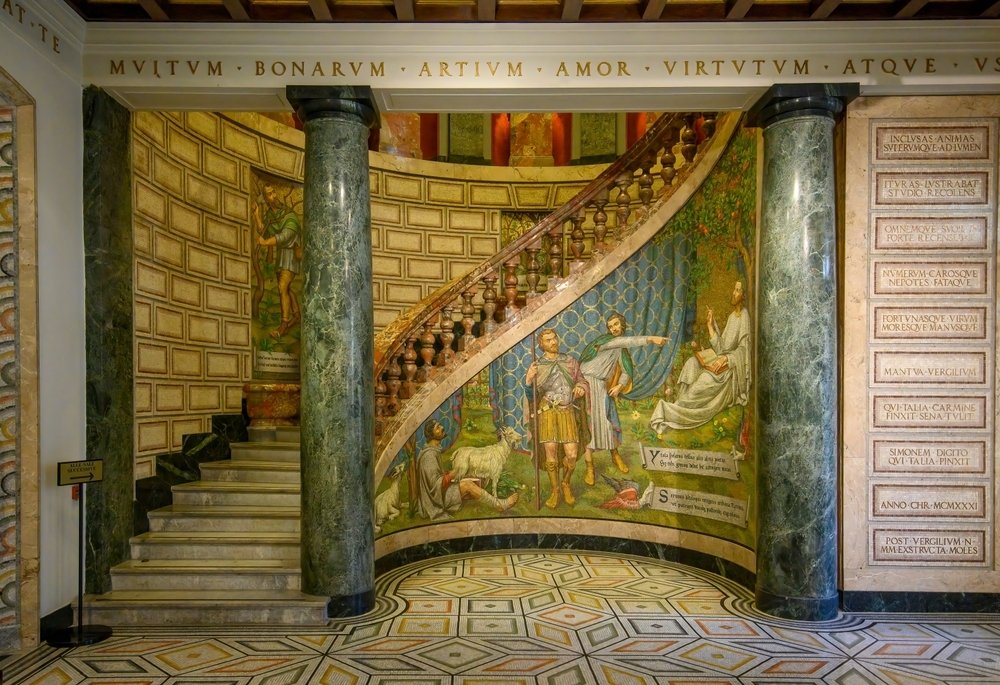
After experiencing Milan’s rich cultural heritage, relax in one of its exceptional hotels – where timeless elegance meets contemporary style.
Portrait Milano
Housed in a 16th-century seminary, the recently opened Portrait Milano by the Ferragamo family’s Lungarno Collection is quickly becoming the city’s most fashionable address. With 73 spacious suites, the hotel combines historic architecture with elegant, modern interiors designed by Michele Bönan. The vast central courtyard creates a quiet, peaceful atmosphere in the middle of bustling Milan.
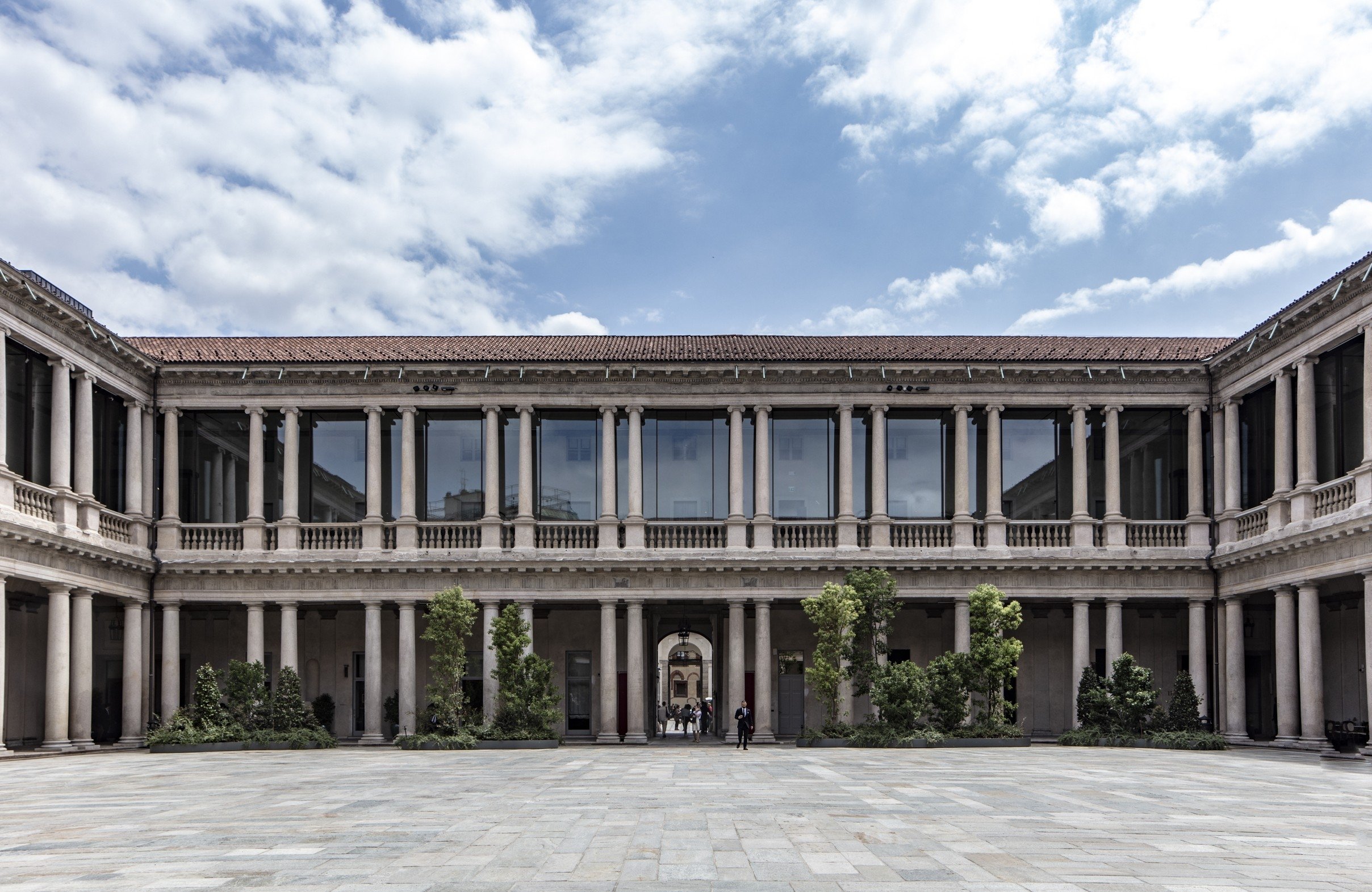
Every detail from the spacious standard rooms to the acclaimed breakfast (recently voted best among Italian hotels) is designed with taste and refinement.
The building also features Milan’s trendiest culinary addresses: BeefBar Milano, Rumor, 10_11 Bar and Giardino Ristorante, each offering a unique concept and all packed with stylish crowds throughout the week.

Casa Brera
Opening its doors in late 2024, Casa Brera is the newest addition to Marriott’s Luxury Collection and occupies a restored 1950s Rationalist building designed by architect Pietro Lingeri. Located near Teatro alla Scala and the artistic Brera district, the hotel offers 116 luxurious rooms, including the 121-square-meter (nearly 400-square-foot) Milanese Presidential Suite with private terraces.
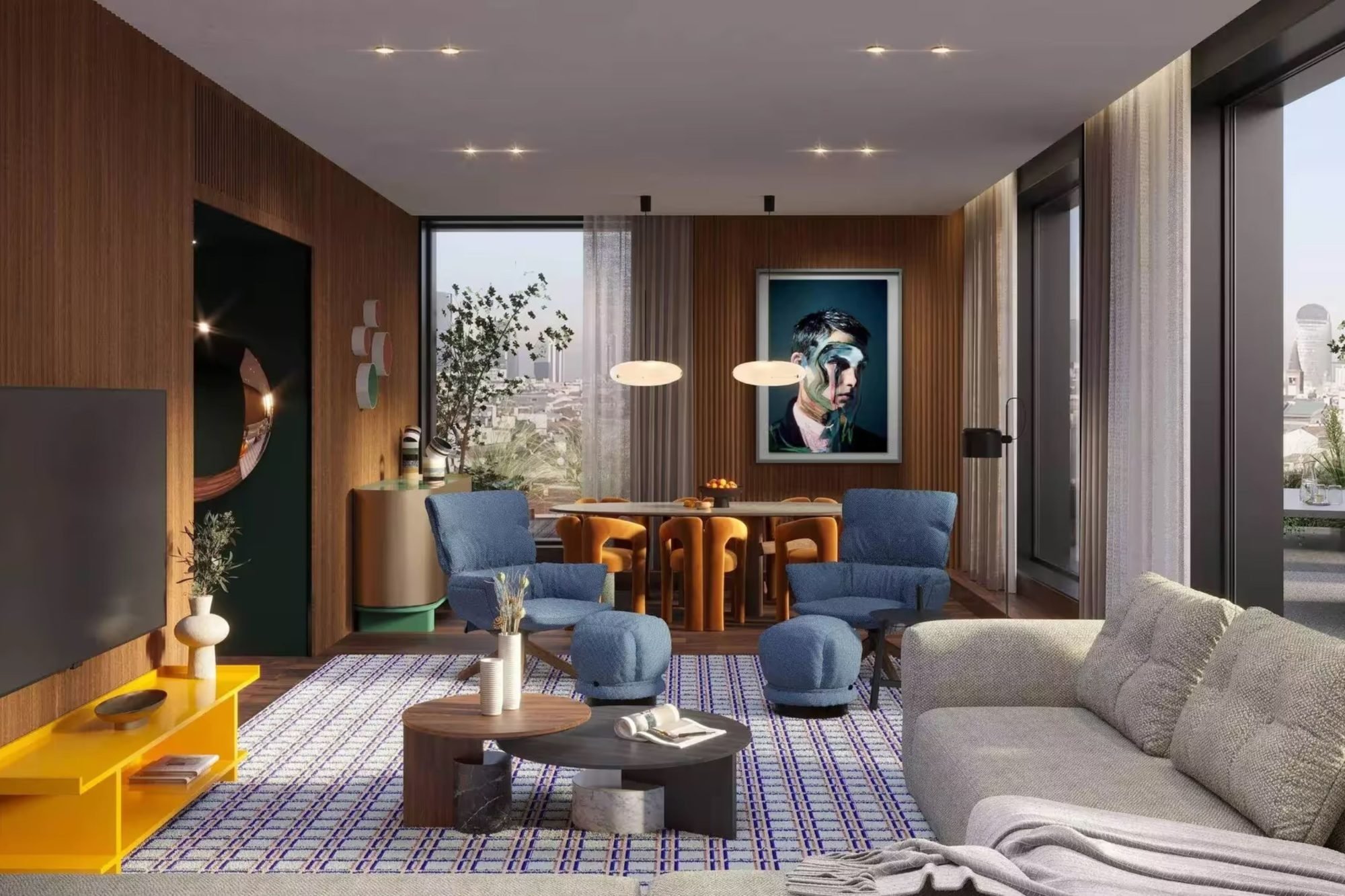
Designed by renowned architect Patricia Urquiola, interiors feature a rich blend of materials like walnut wood, Fior di Pesco marble and brass. The hotel also showcases contemporary art, including works by British photographer Tim Walker, which aligns with Milan’s creative spirit.
Dining is led by celebrated Italian chef Andrea Berton, with four distinct venues: the Living Lounge, fine dining Scen, rooftop Etero and Odachi: a refined Japanese omakase restaurant available by reservation only.
Frangente
Chef Federico Sisti, after years of working in Michelin-starred kitchens, chose to create something more relaxed and soulful, and Frangente was born. With a sharp focus on flavour and a dedication to the essence of Italian cuisine, the menu blends tradition with innovation. Expect umami-rich combinations, mineral notes and elevated simplicity. The result? A memorable, high-level dining experience in a cozy, understated setting.
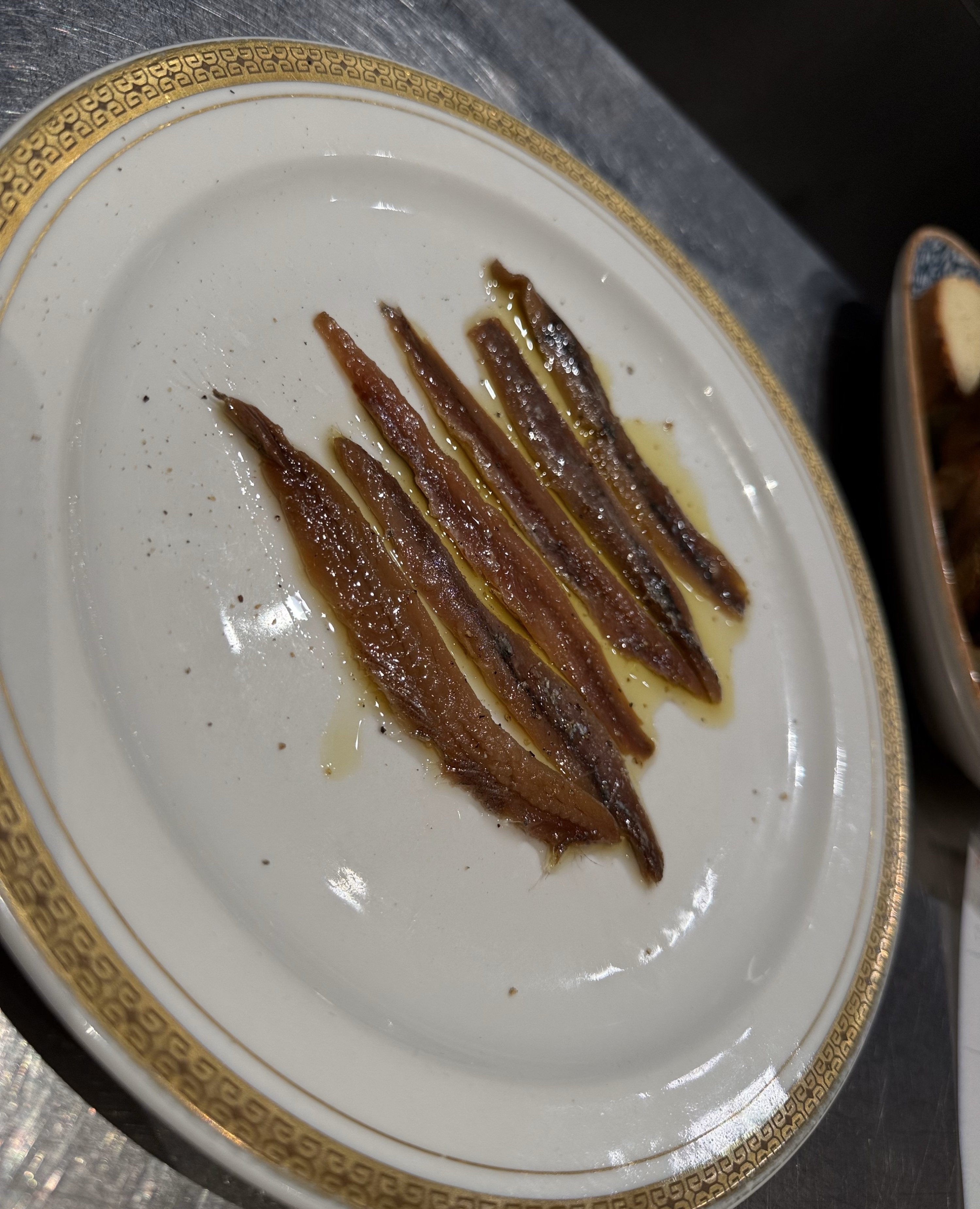
If there’s a particular dish or flavor you’d like beyond the classic menu, they’re happy to prepare it for you on the spot.
Sandi
One of Milan’s most charming new addresses, Sandi is the brainchild of chef Laura Santosuosso and restaurateur Danny Mollica. Open for weekday lunches and Friday dinners, it nods to the intimacy of French bistros while embracing fresh pasta, seasonal vegetables and bold cheeses. With minimalist decor, white tablecloths and a focus on seasonal simplicity, Sandi has already captured the attention of Italy’s leading design magazines for its warm, nostalgic atmosphere.
Milan has become more than a fashion capital, it’s now a dynamic destination with heart, soul and style. Whether you’re exploring centuries-old masterpieces or sipping wine in a design-forward bistro, the city’s new energy is unmistakable. Milan is no longer just a stopover; it’s a destination.
Lifestyle
Blue Flag beaches shine on Türkiye’s Black Sea, Marmara coasts
Blue Flag beaches in the Turkish provinces of Kocaeli, Zonguldak and Bartın have completed their preparations and are counting down the days to welcome visitors for the summer season.
The Blue Flag is awarded by the Turkish Environmental Education Foundation (TÜRÇEV) to beaches that meet strict environmental and safety criteria. Currently, Kocaeli hosts nine Blue Flag beaches, Zonguldak has two and Bartın has one.
Located along the coasts of the Black Sea and the Marmara Sea, these Blue Flag beaches offer clean and safe swimming areas during the summer months.
Kocaeli
Kocaeli, one of Türkiye’s major industrial cities, features Blue Flag beaches that attract both local residents and tourists from nearby provinces during the summer.
The Izmit Bay area boasts Blue Flag beaches such as Altınkemer and Ereğli Kumyalı, while the Black Sea coast in the Kandıra district offers Cebeci, Kerpe, Bağırganlı, Kumcağız, Miço, Kovanağzı and Seyrek beaches – all providing services that meet international standards.
Mesut Önem, head of the Department of Environmental Protection and Control, highlighted that out of 24 swimming areas in the province, nine have qualified for the Blue Flag, an “eco-label” awarded annually after meeting 33 criteria, including water quality.
Kandıra, with a permanent population of about 50,000 that multiplies 10 to 20 times during summer, is especially noted for its natural beauty and protected bays. The municipality has invested heavily in sustainable environmental management since 2004, ensuring no untreated wastewater is discharged into the seas through 23 treatment plants and organizing regular sea cleaning activities.
Altınkemer Public Beach has been recognized by TÜRÇEV as the beach most frequented by children, reflecting Kocaeli’s focus on family-friendly coastal areas.
Bartın
Bartın’s Inkumu Beach, surrounded by mountains and forest, is the province’s only Blue Flag beach, stretching over a 3-kilometer (1.8-mile) coastline. Since its successful Blue Flag application in 2021, the beach has attracted visitors mainly from Ankara, Istanbul, Izmir, Antalya and neighboring provinces.
The beach experiences its peak season during June, July and August, with holiday weekends and national holidays seeing particularly high visitor numbers. Parking restrictions are sometimes applied during busy times to manage traffic flow.
Bartın Mayor Rıza Yalçınkaya described the province’s coastline as a rare natural beauty with steep, forested slopes leading down to clean, calm bays. In addition to Inkumu, seven other beaches managed by the provincial administration and district centers like Amasra and Kurucaşile also attract tourists.
Since 2000, numerous environmental and safety improvements have been implemented, including lifeguard services, drowning prevention measures and advanced wastewater treatment systems. These efforts culminated in meeting all 33 Blue Flag criteria, making Inkumu a symbol of a clean, safe and well-equipped beach.
Zonguldak
Zonguldak’s Karadeniz Ereğli district earned Blue Flags for its “Sevgi” (Love) and “Barış” (Peace) beaches after a four-year preparation process, receiving the award in 2023. These beaches, located along the Karadeniz Ereğli-Alaplı coastal road, attract many visitors from other Turkish cities as well as European tourists.
Despite sustaining damage during a storm in November 2023, the municipality swiftly restored and improved the beaches. The area covers 51,000 square meters and includes Sevgi Beach, Barış Beach and the Dostluk (Friendship) Picnic Area, all praised for their natural beauty.
Sevgi Beach is free to enter, with complimentary sunbeds and umbrellas and visitors can bring their own food. Barış Beach charges for sunbeds and umbrellas and offers hygienic food services on-site, including the local specialty, Ereğli pide.
Halil Posbıyık, mayor of Karadeniz Ereğli, emphasized the presence of lifeguards, private security and 24-hour monitoring. The picnic area includes barbecue facilities, tables and chairs free for public use.
The beaches feature modern amenities such as an aqua park, volleyball and basketball courts, children’s play areas, prayer rooms and more. Tourists from southern coastal resorts like Bodrum and Antalya, drawn by the cooler Black Sea waters, frequently choose these beaches. European visitors and domestic tourists alike appreciate the quality, often stating that there’s no need to travel to southern resorts when Ereğli offers excellent alternatives.
-

 Economy3 days ago
Economy3 days agoTurkish business union leads push for Syria’s reconstruction
-

 Daily Agenda2 days ago
Daily Agenda2 days agoBAKLAVA arrested bribes in the box
-

 Daily Agenda2 days ago
Daily Agenda2 days agoIf we forget, our blood is dry – last minute news
-

 Politics3 days ago
Politics3 days agoMethane exposure kills 12 Turkish soldiers in Iraq
-

 Politics2 days ago
Politics2 days agoTürkiye’s ruling AK Party to chart the future in strategic workshop
-

 Refugees2 days ago
Refugees2 days agoTurkey bans Musk’s AI chatbot Grok for offensive content
-

 Sports2 days ago
Sports2 days agoSüper Lig transfer frenzy heats up with Kökçü, Osimhen, Rashford
-

 Economy3 days ago
Economy3 days agoTürkiye’s stability, tech surge win over investors: Investment chief




